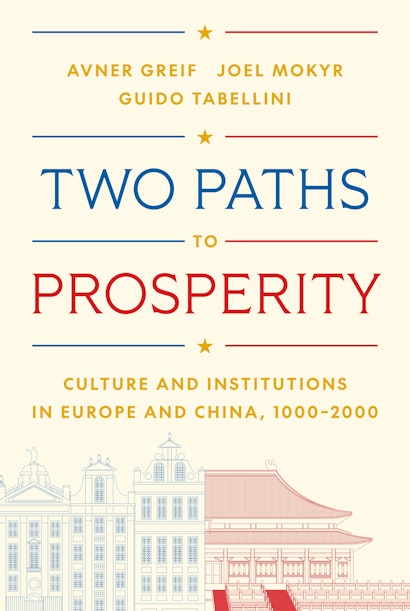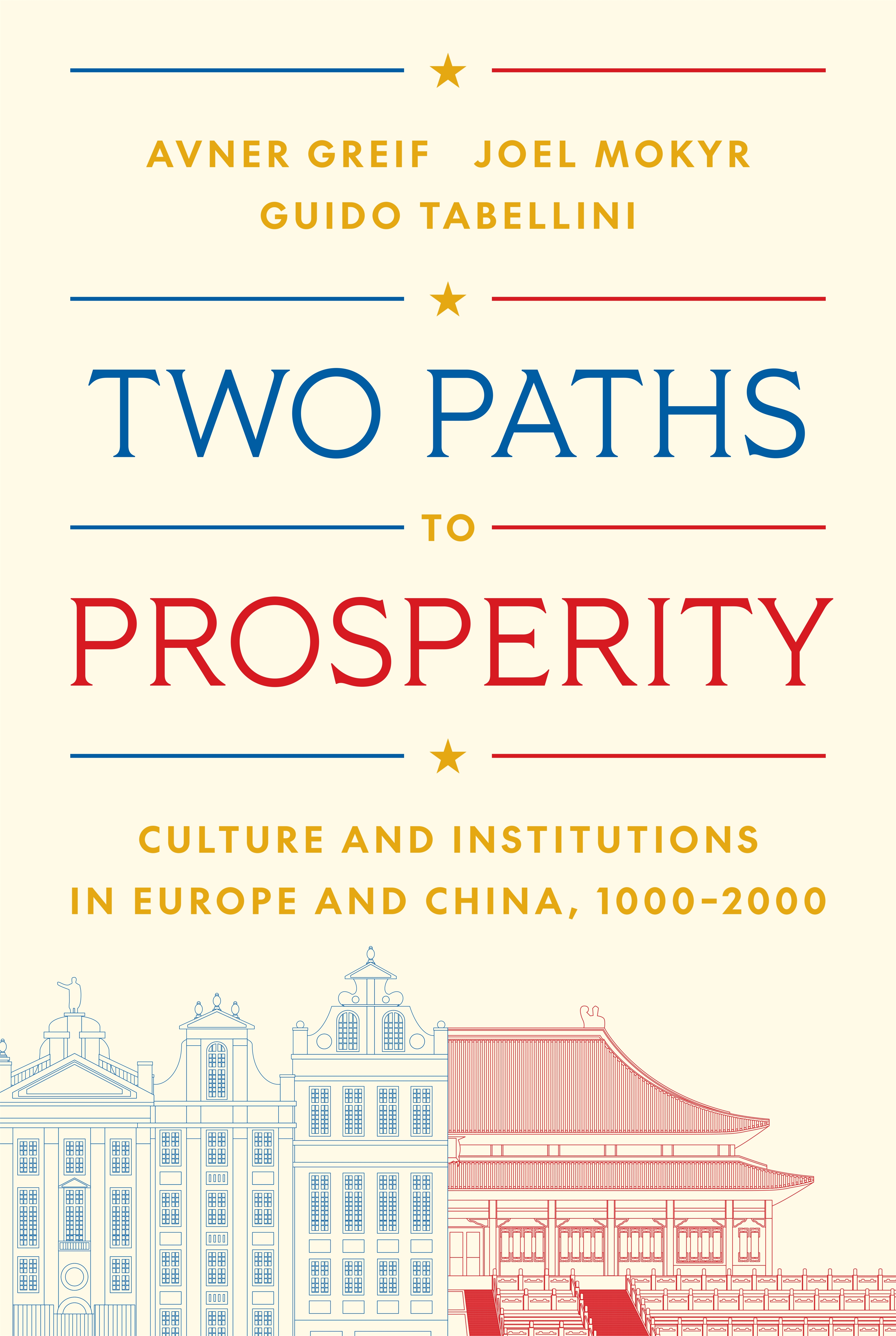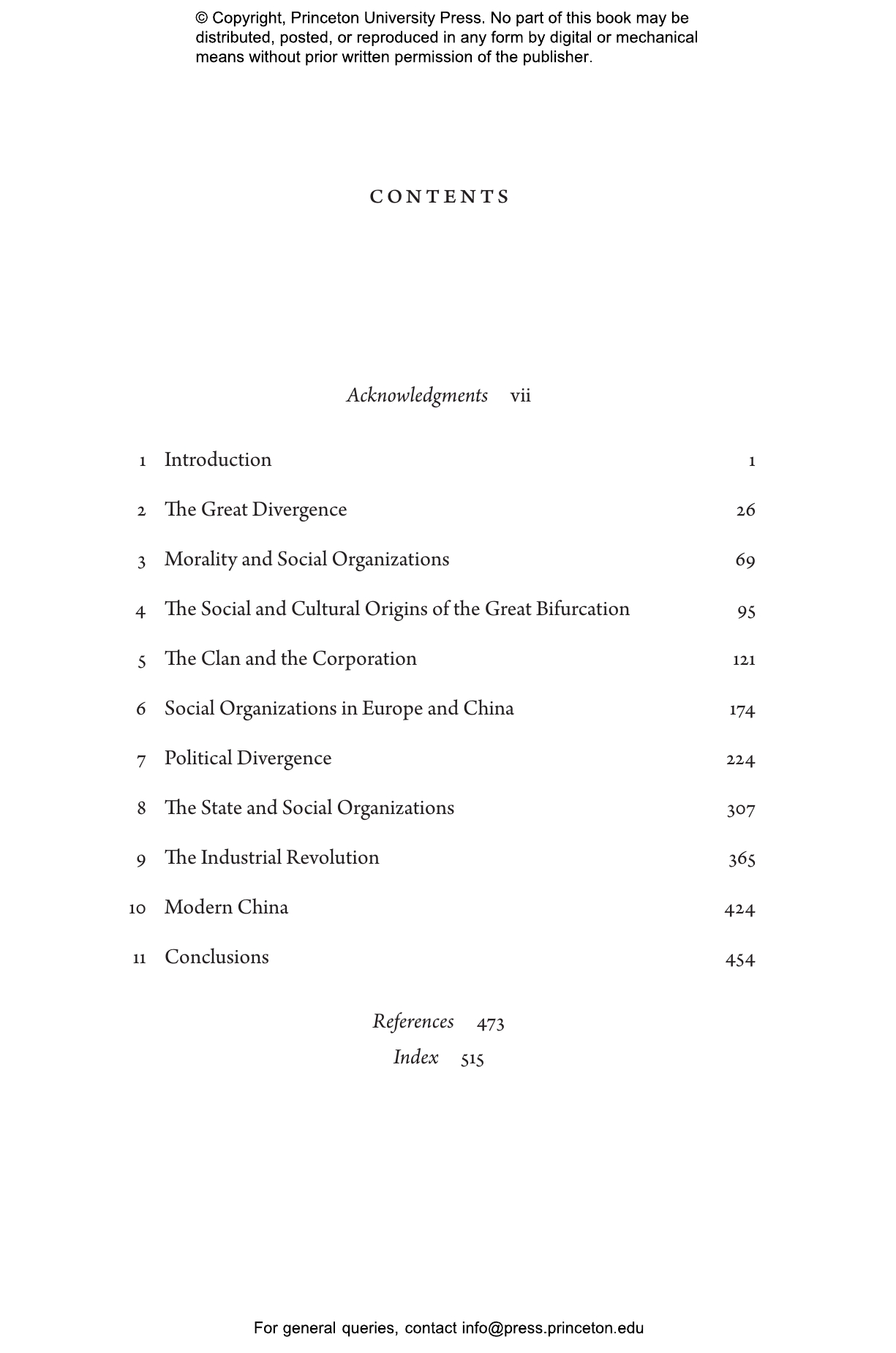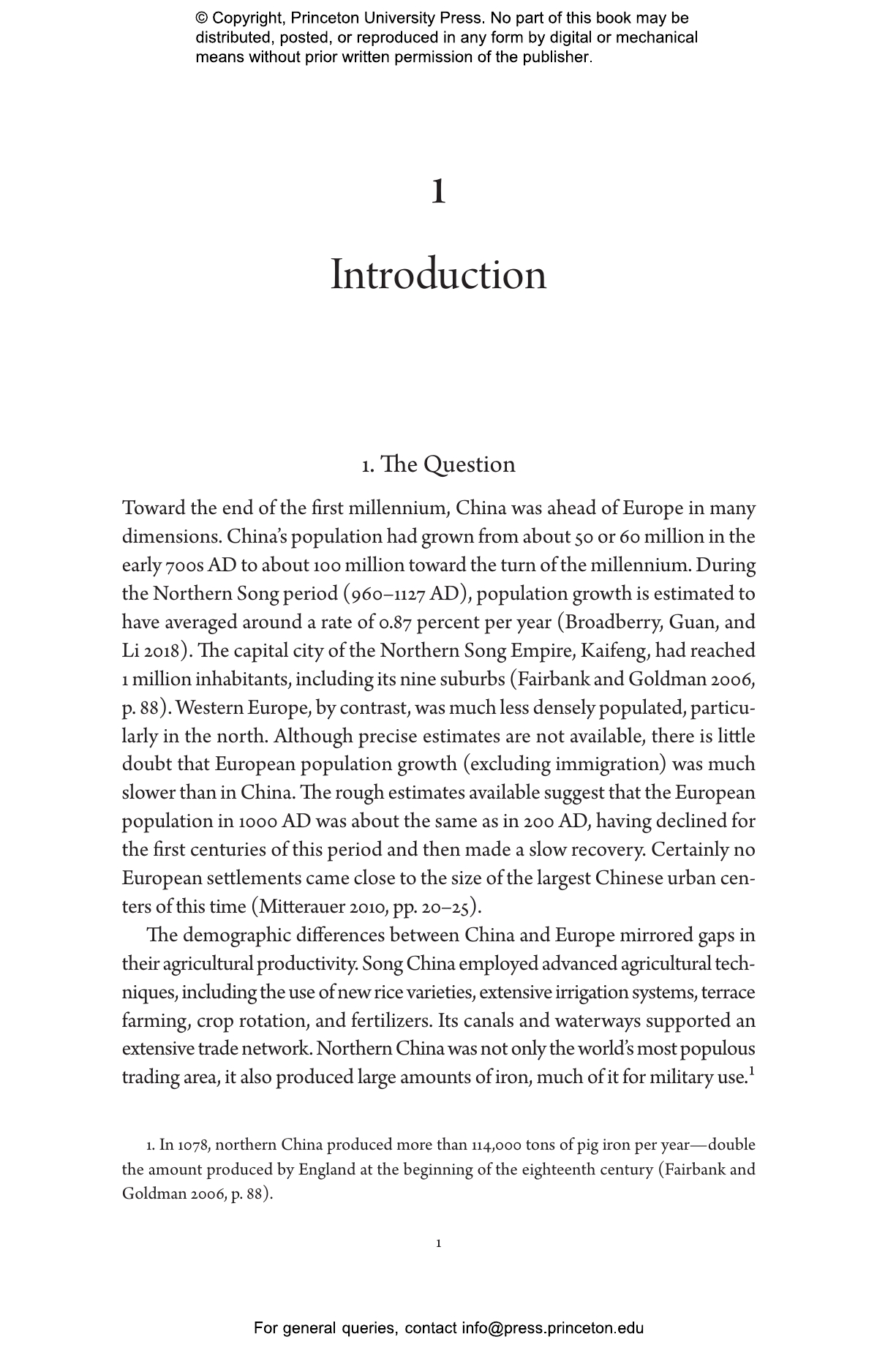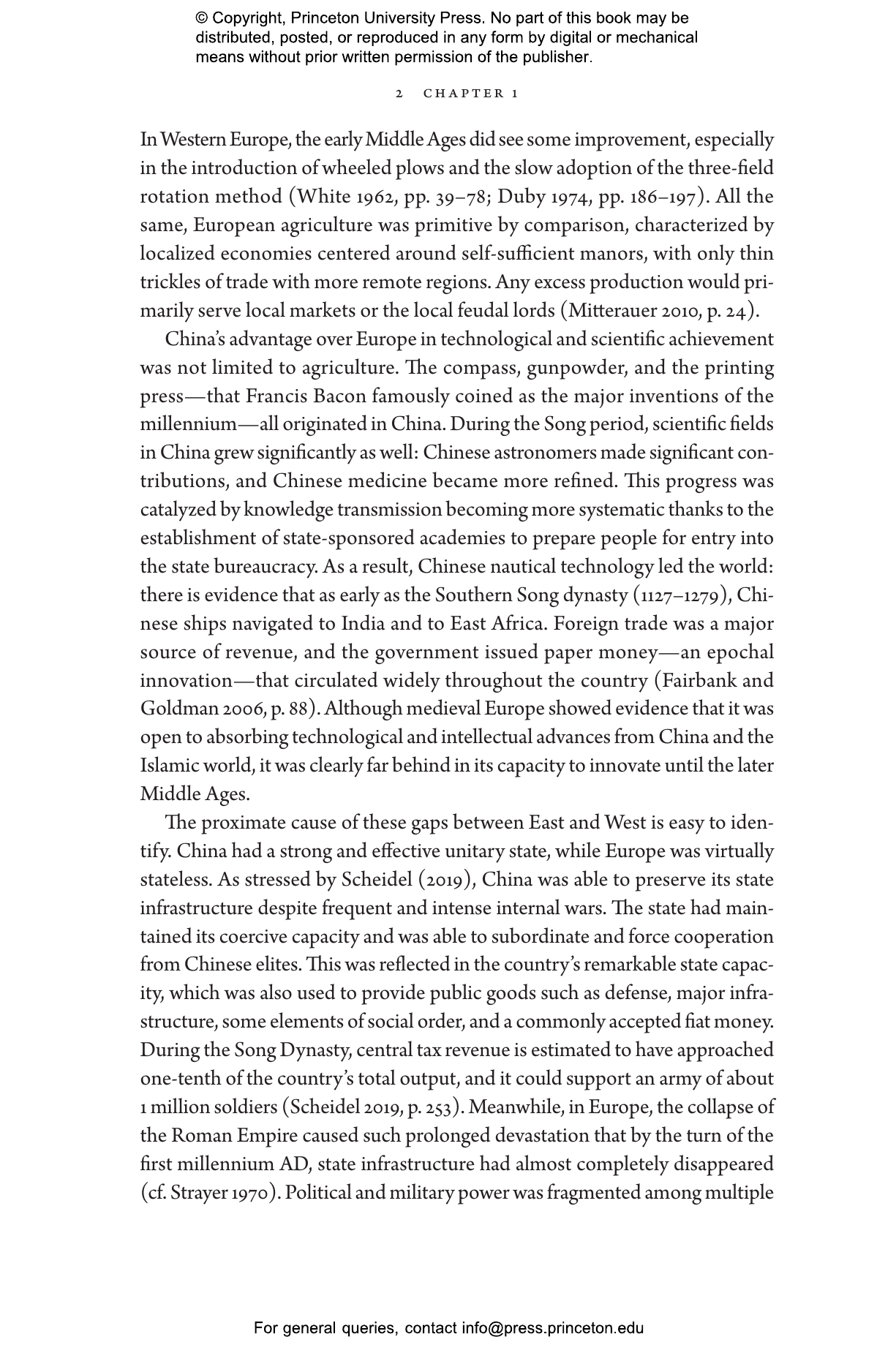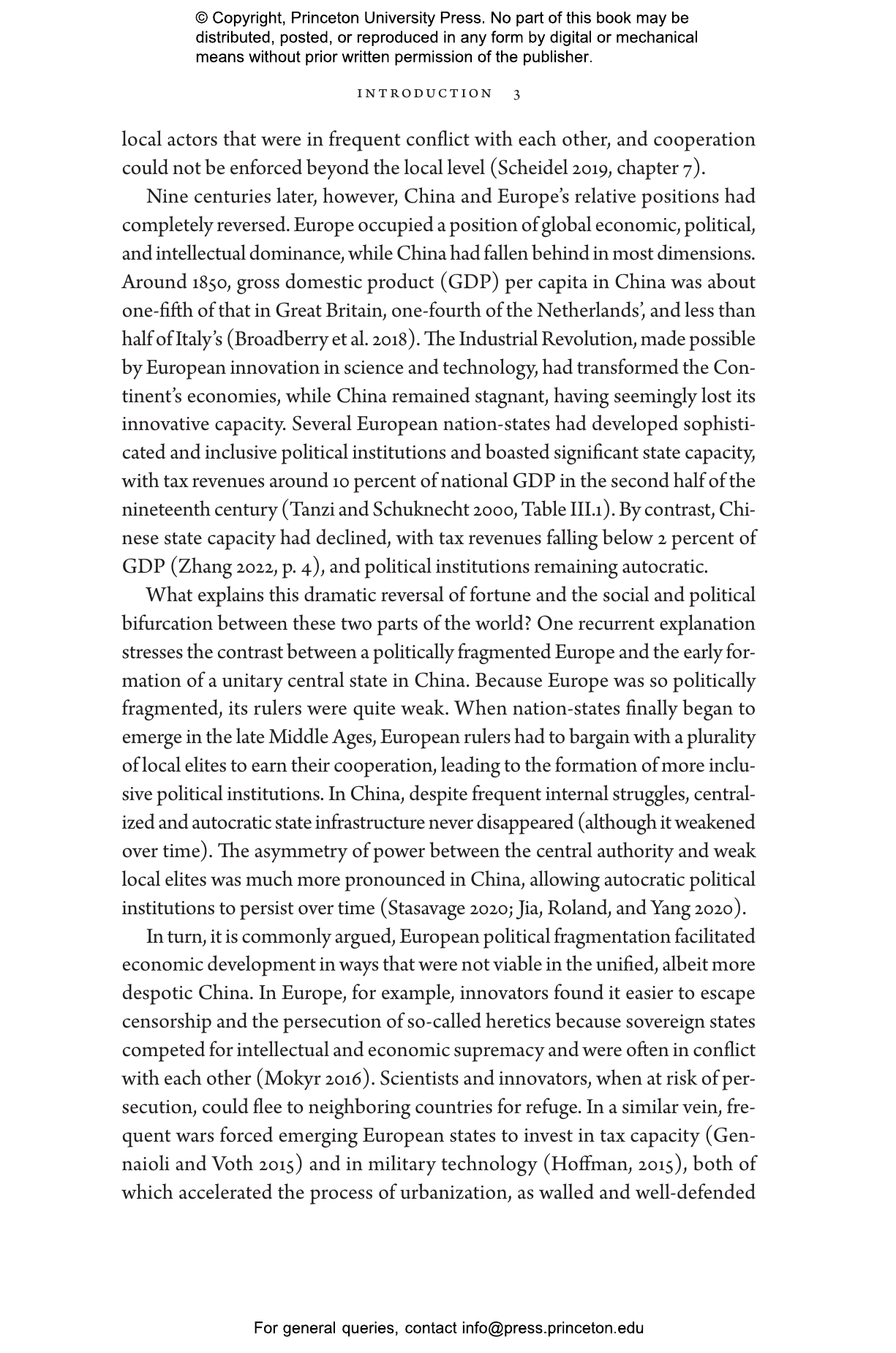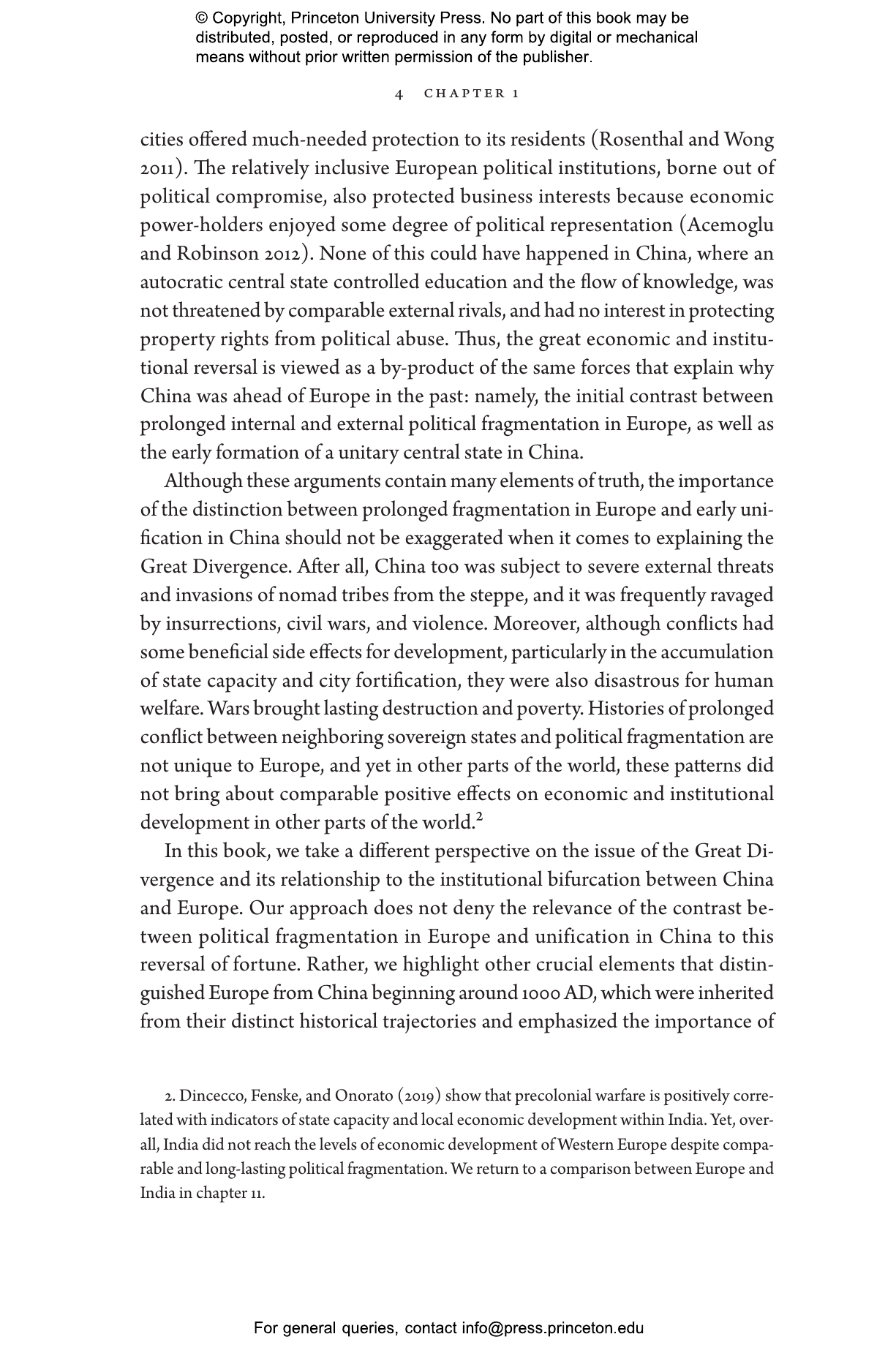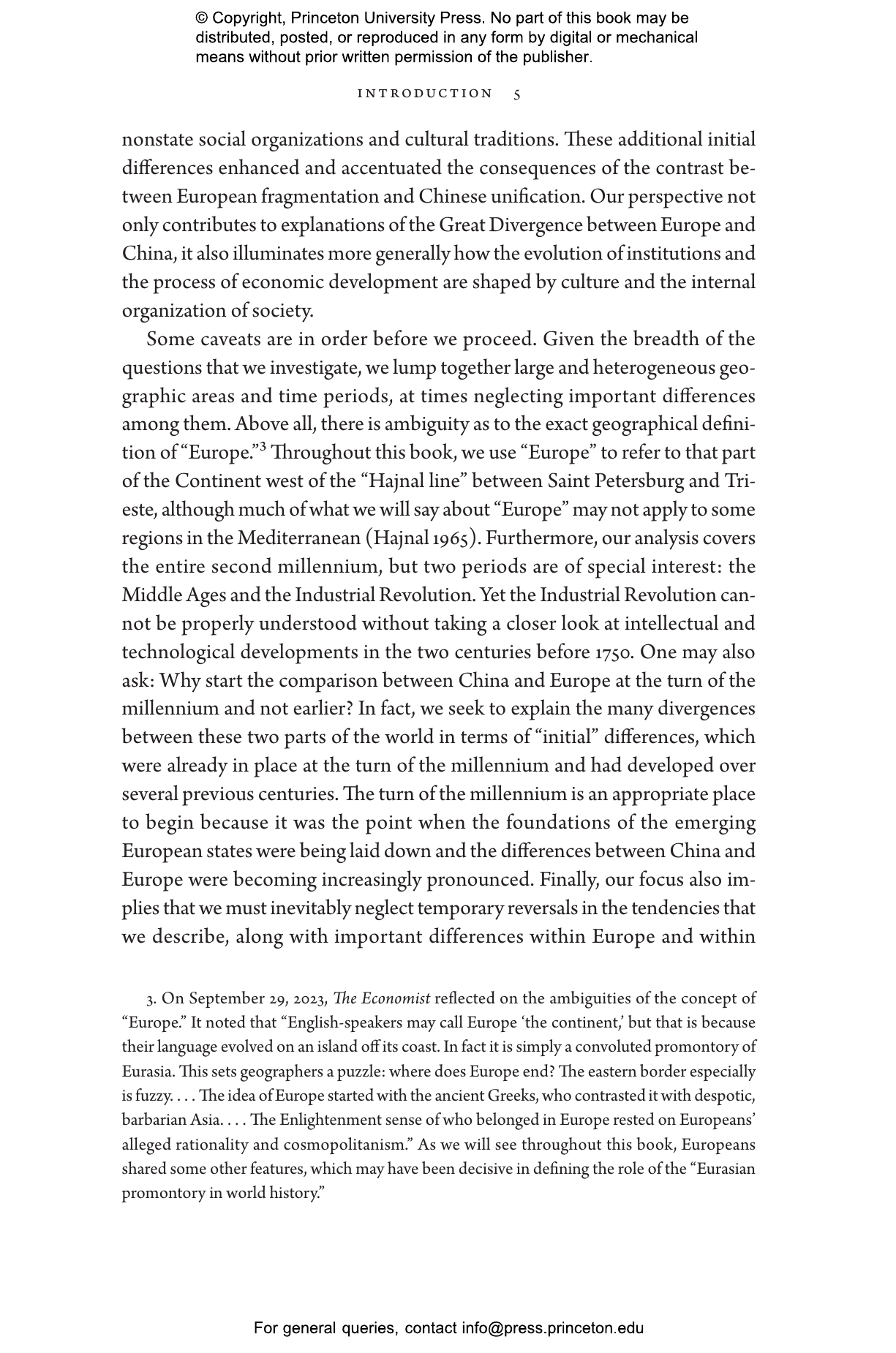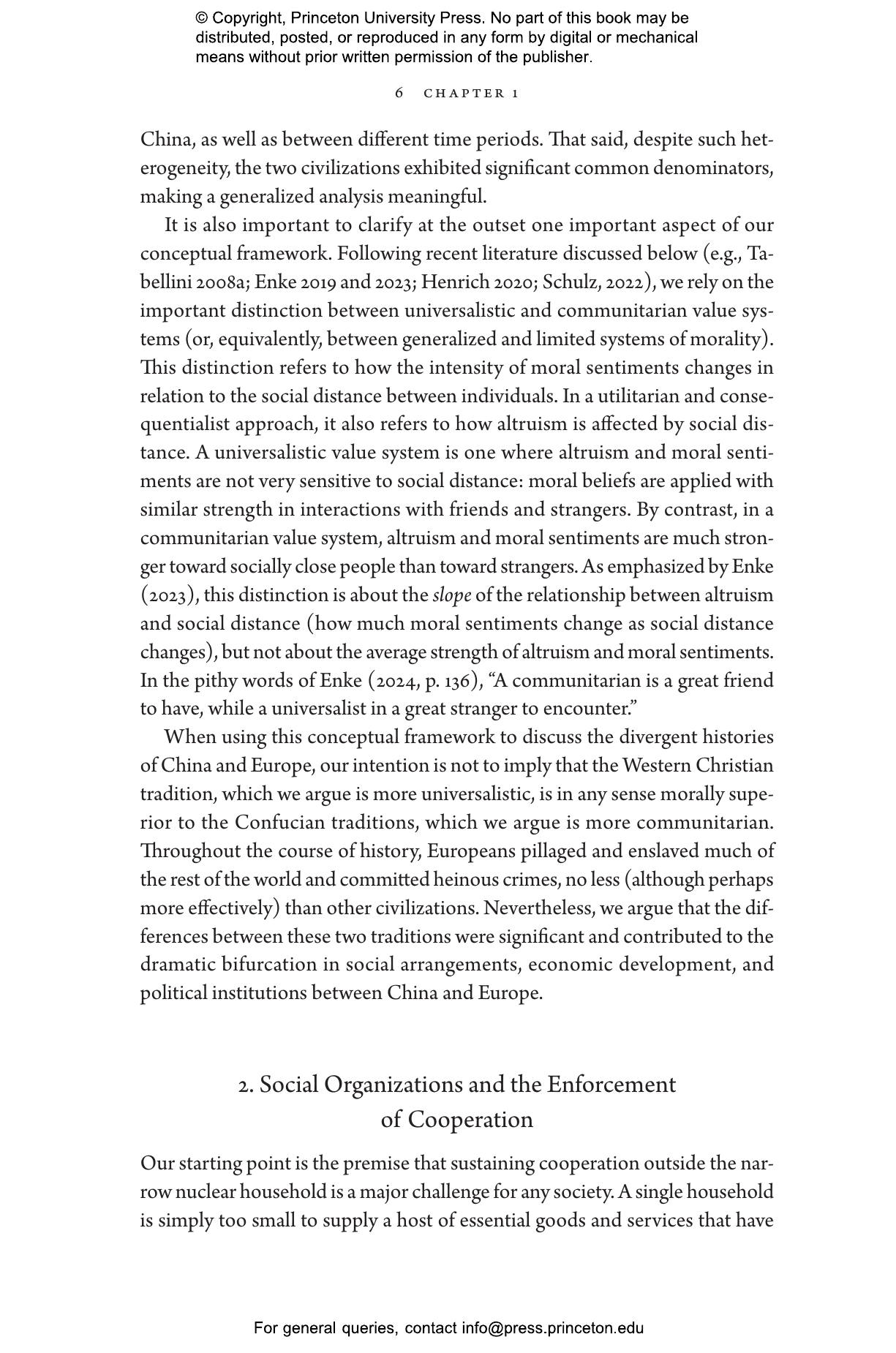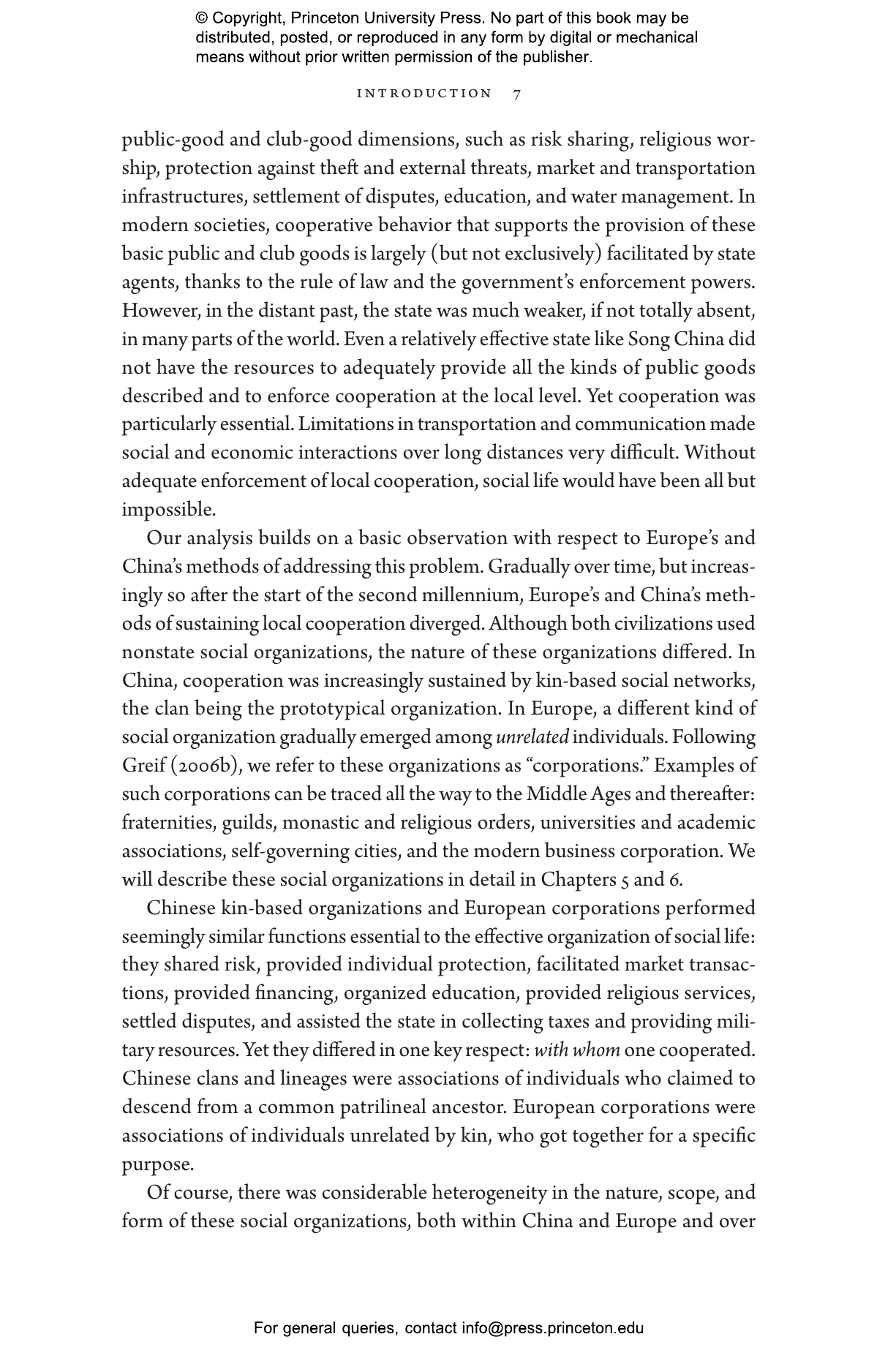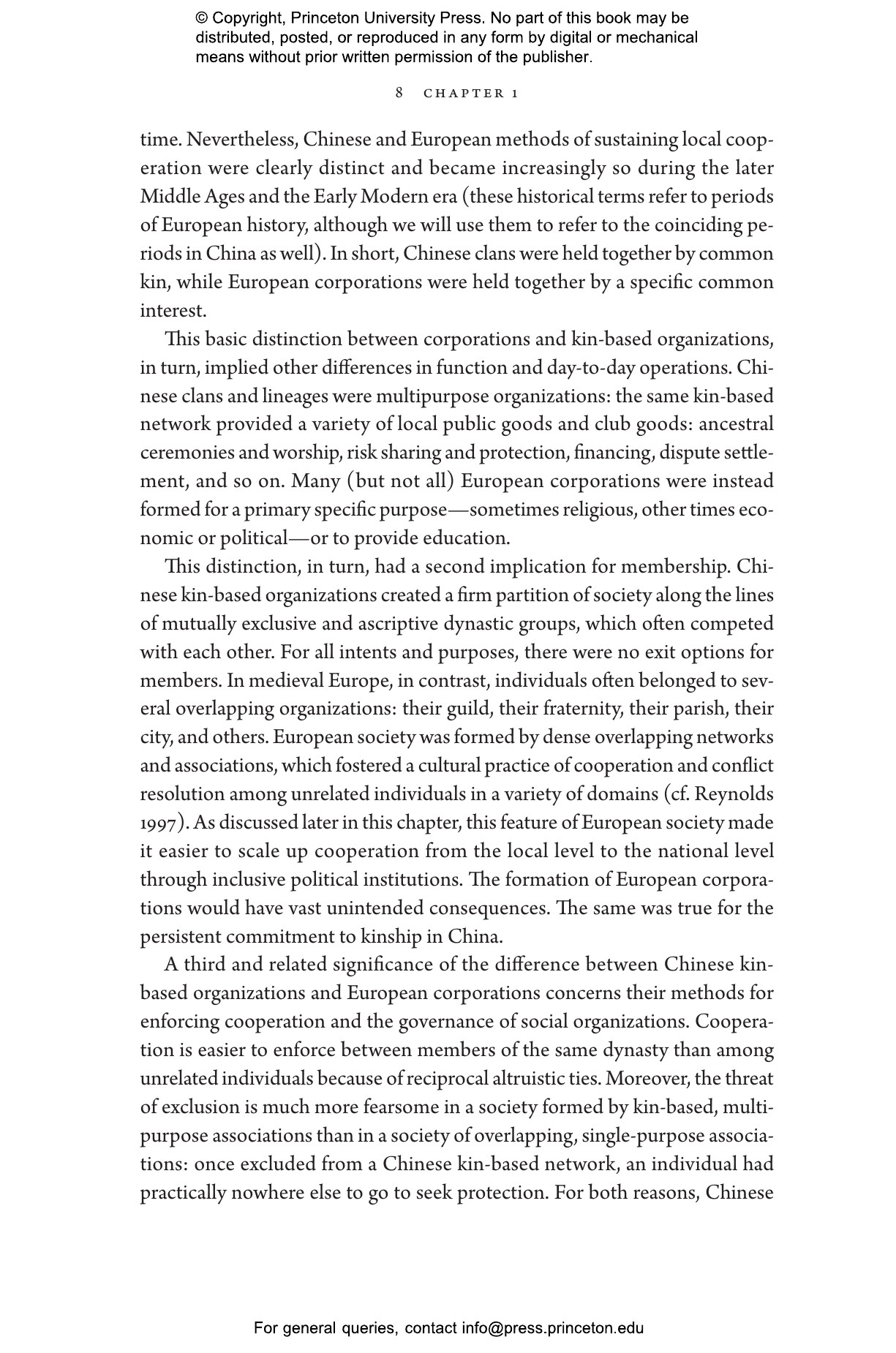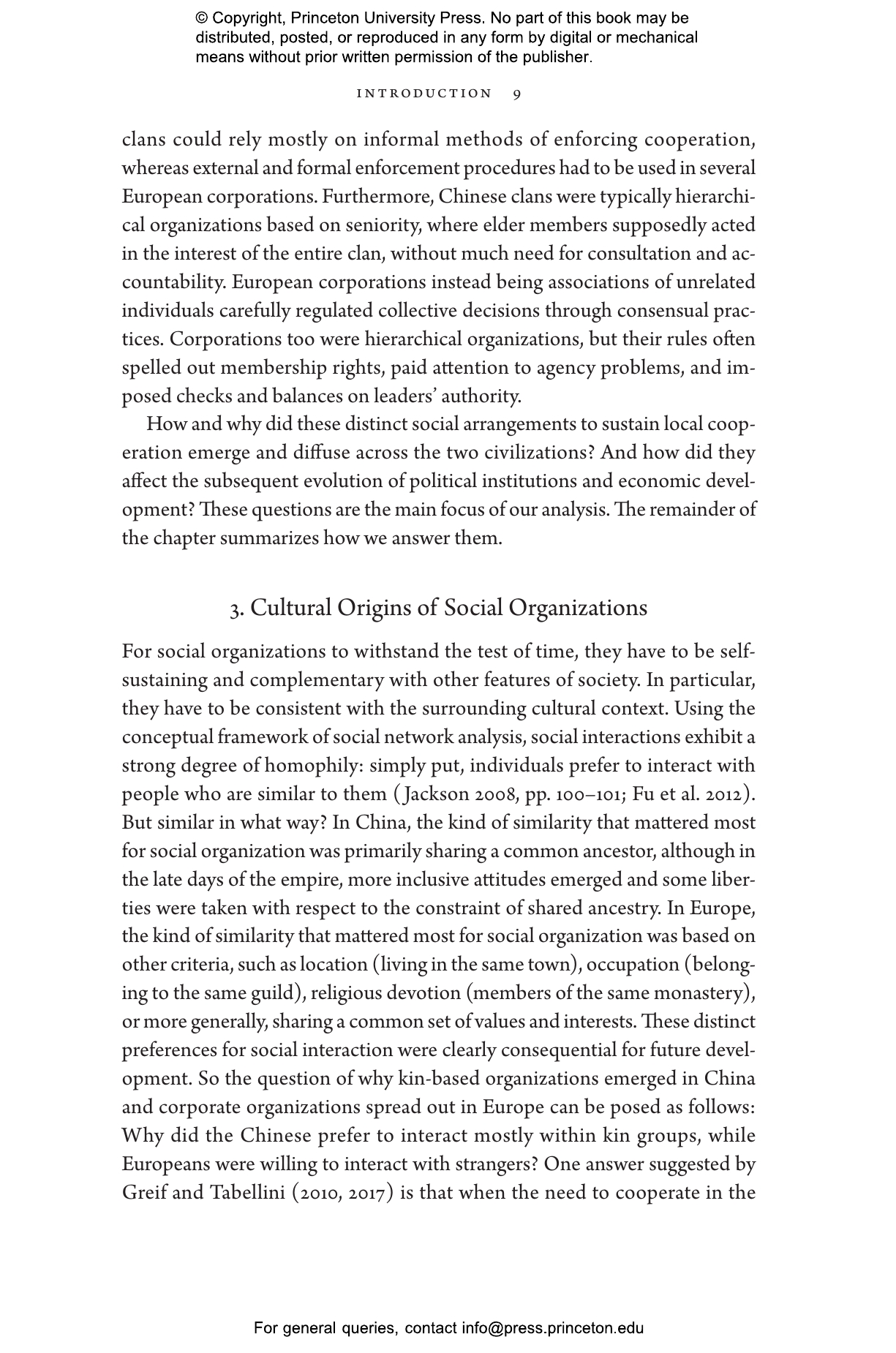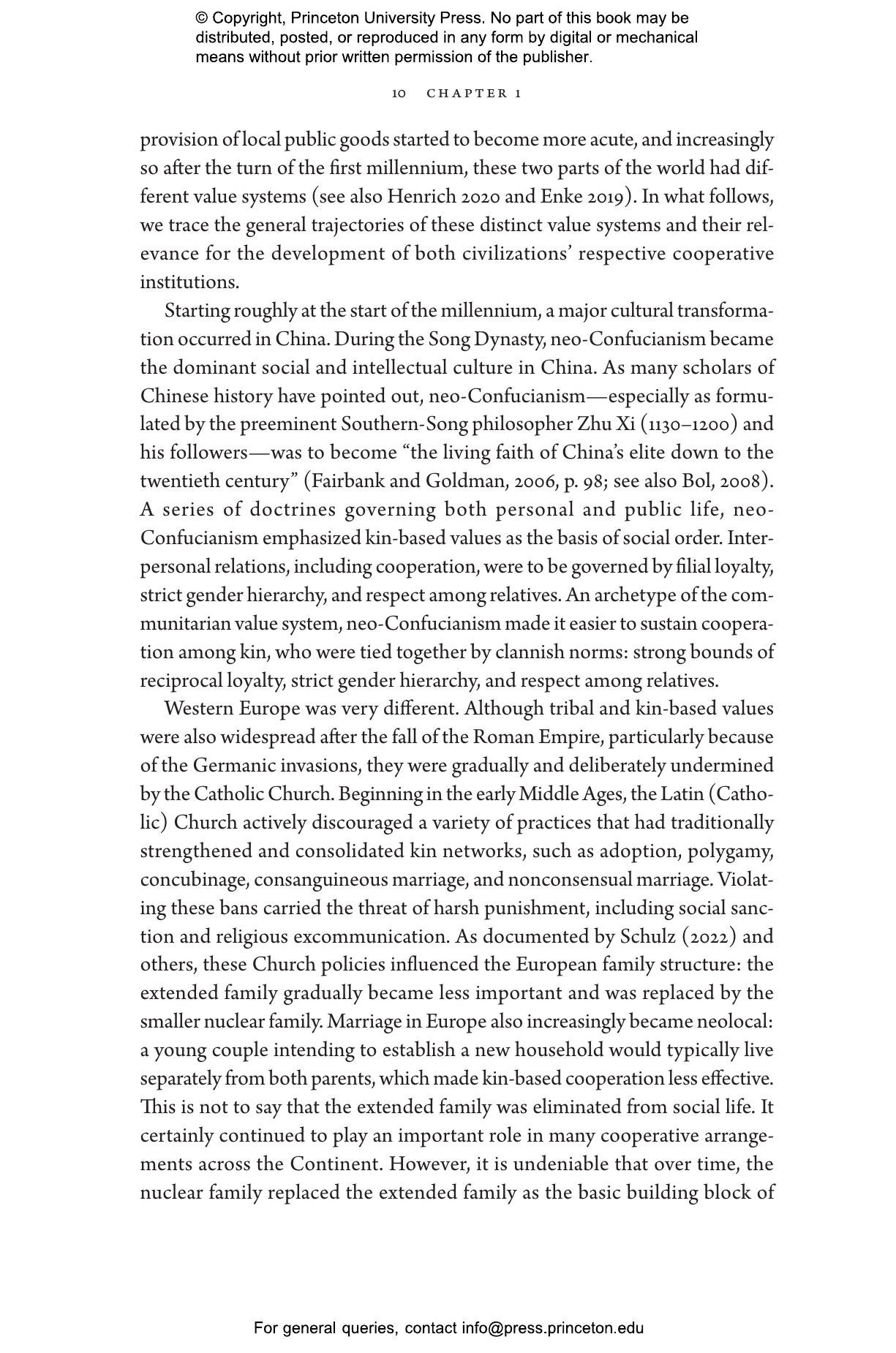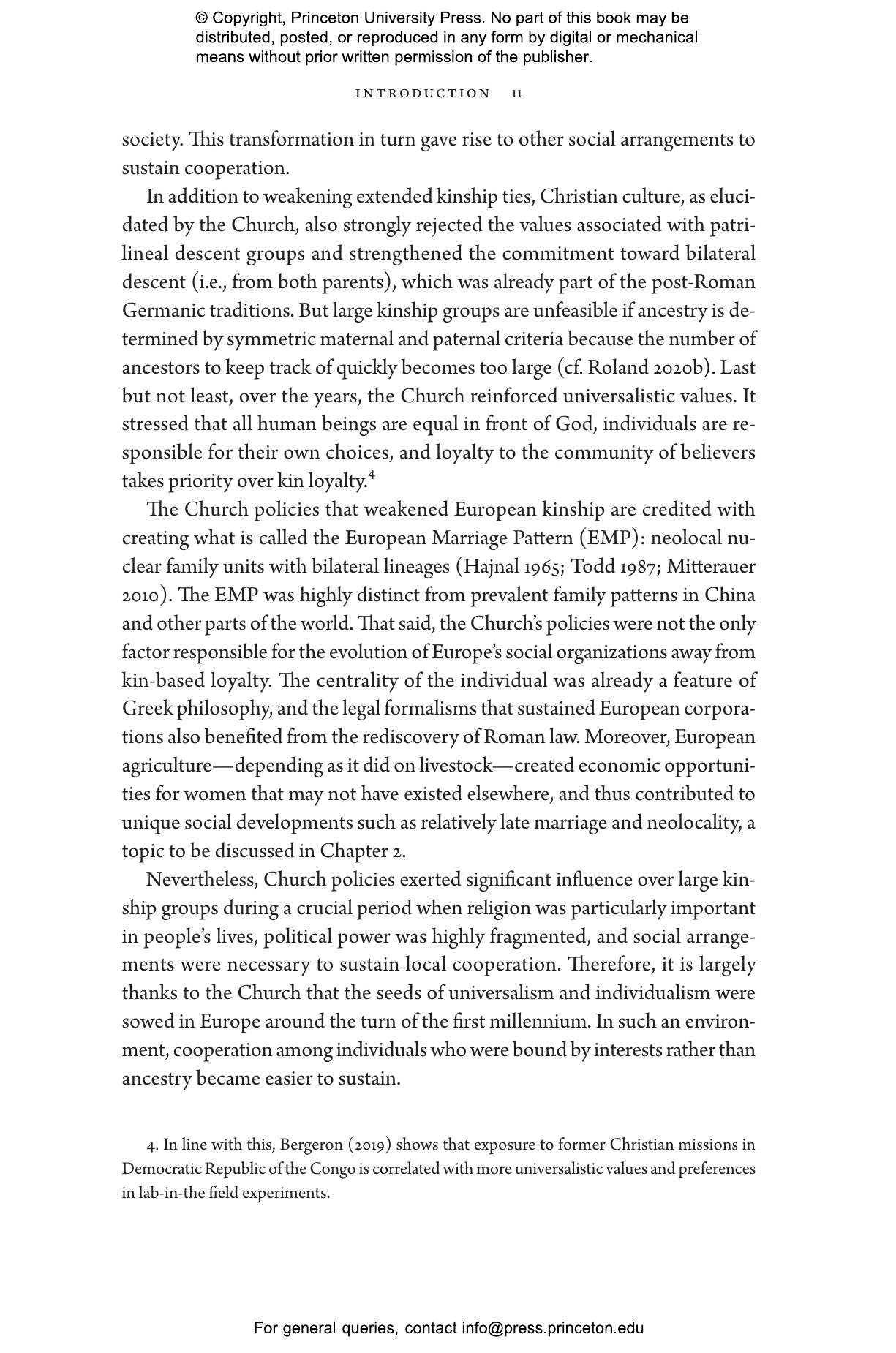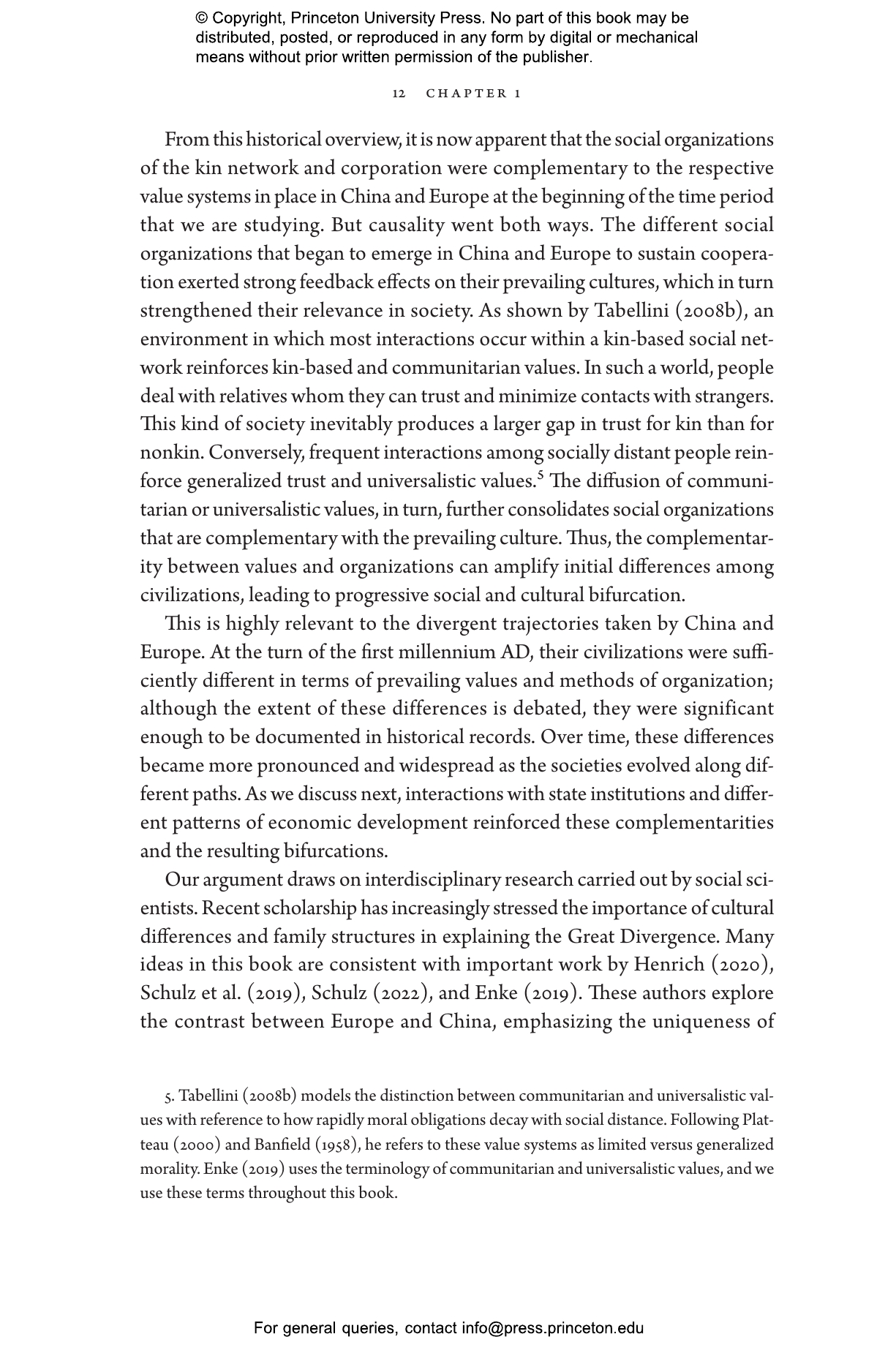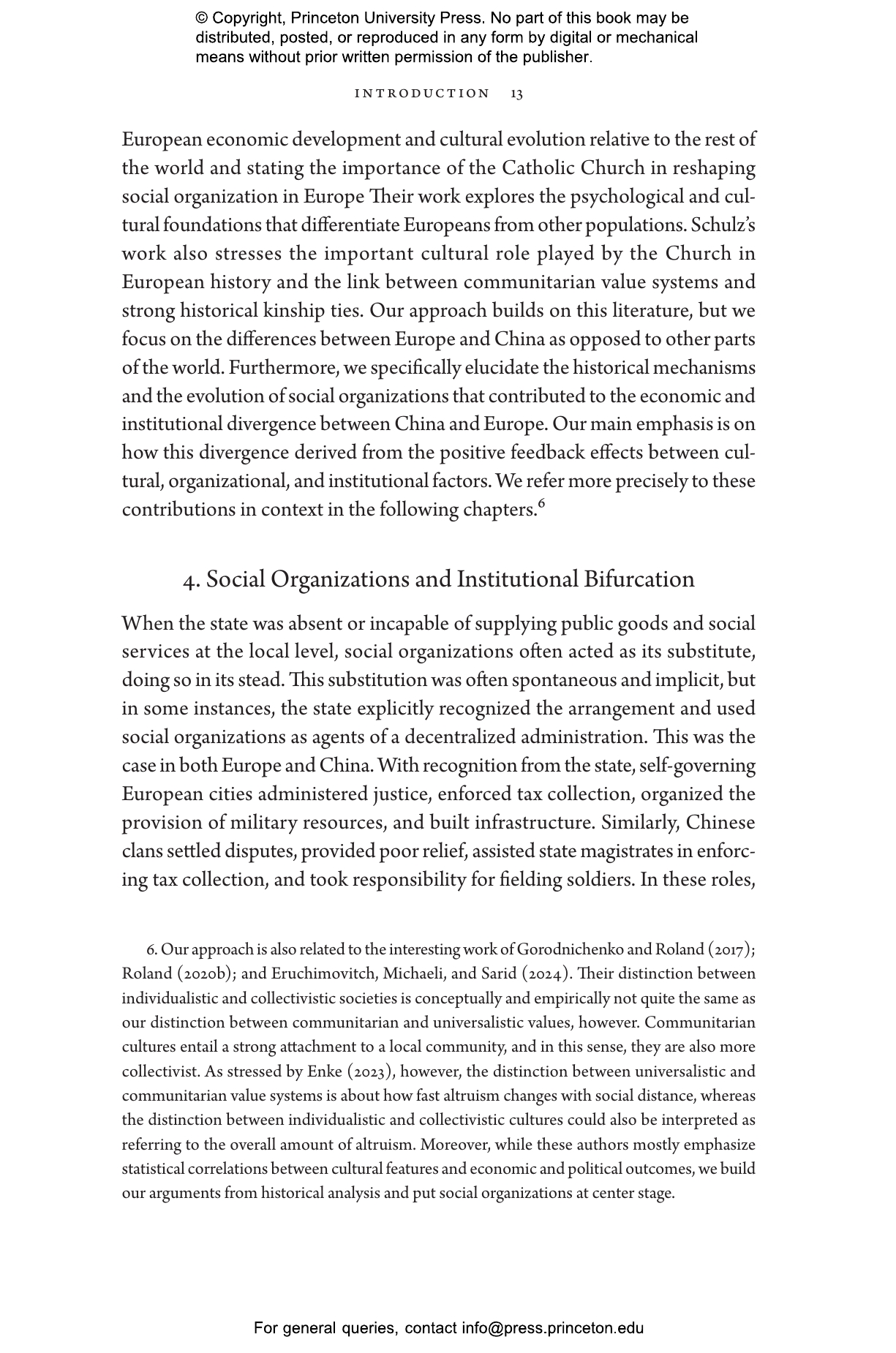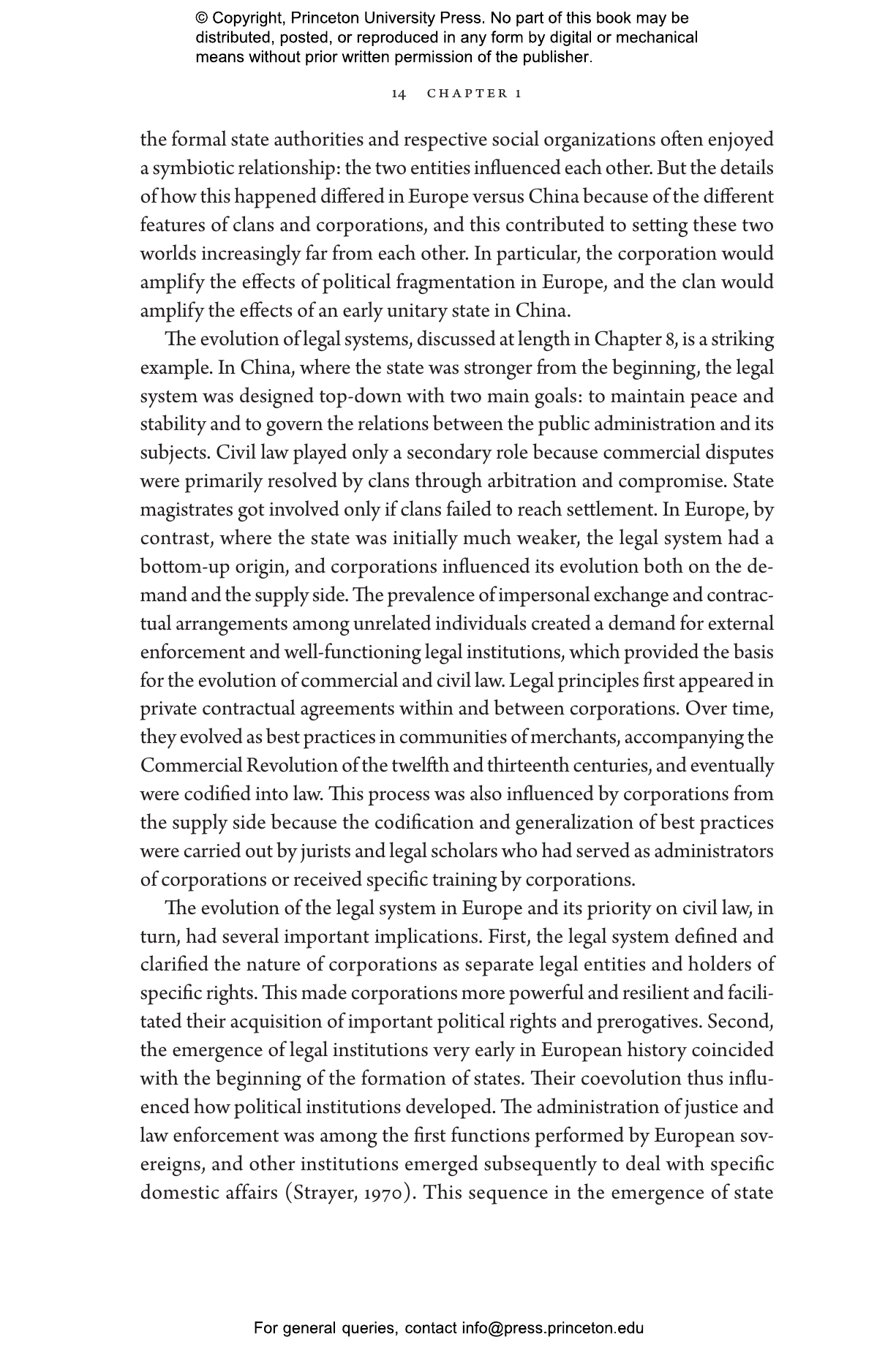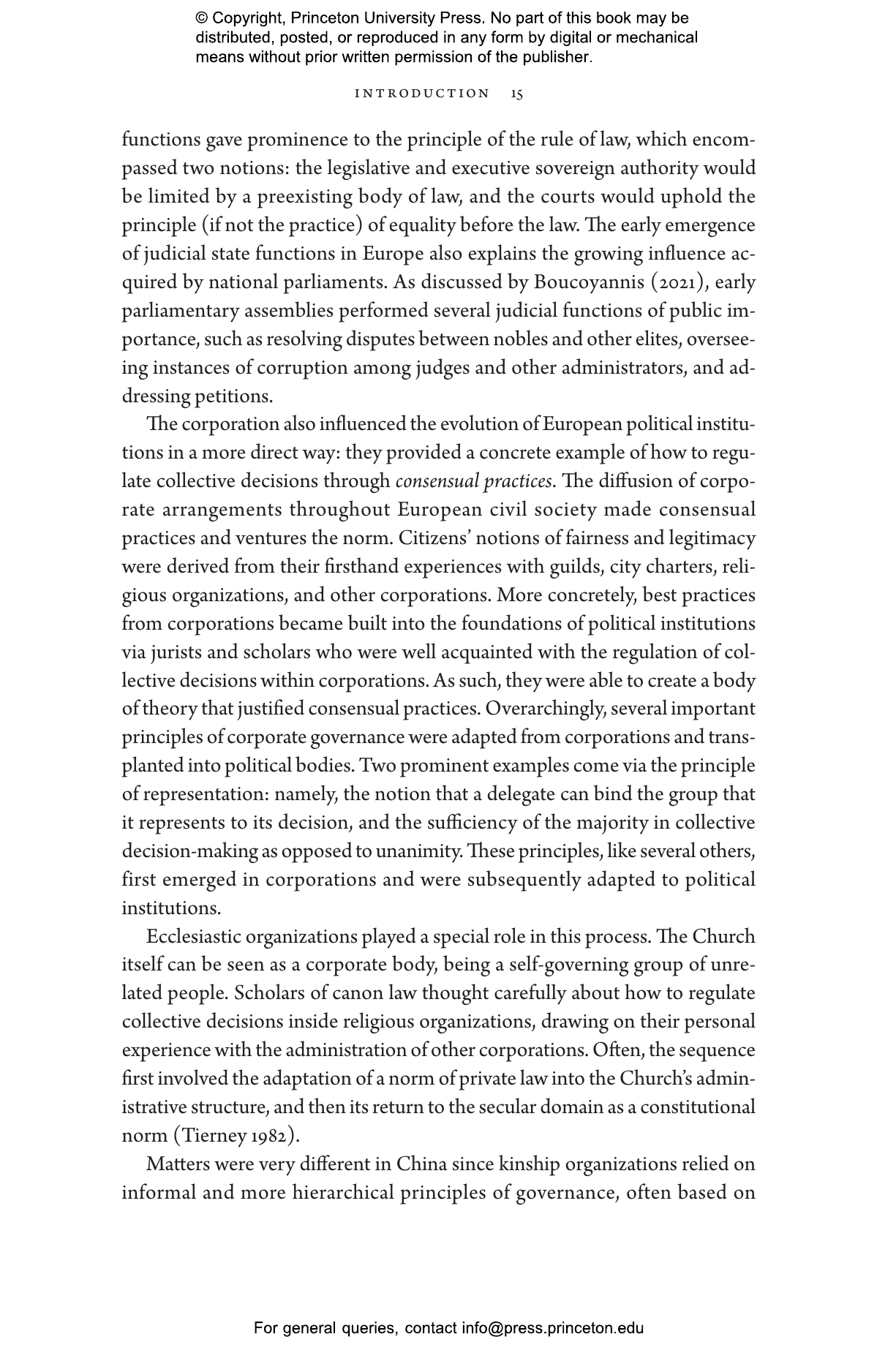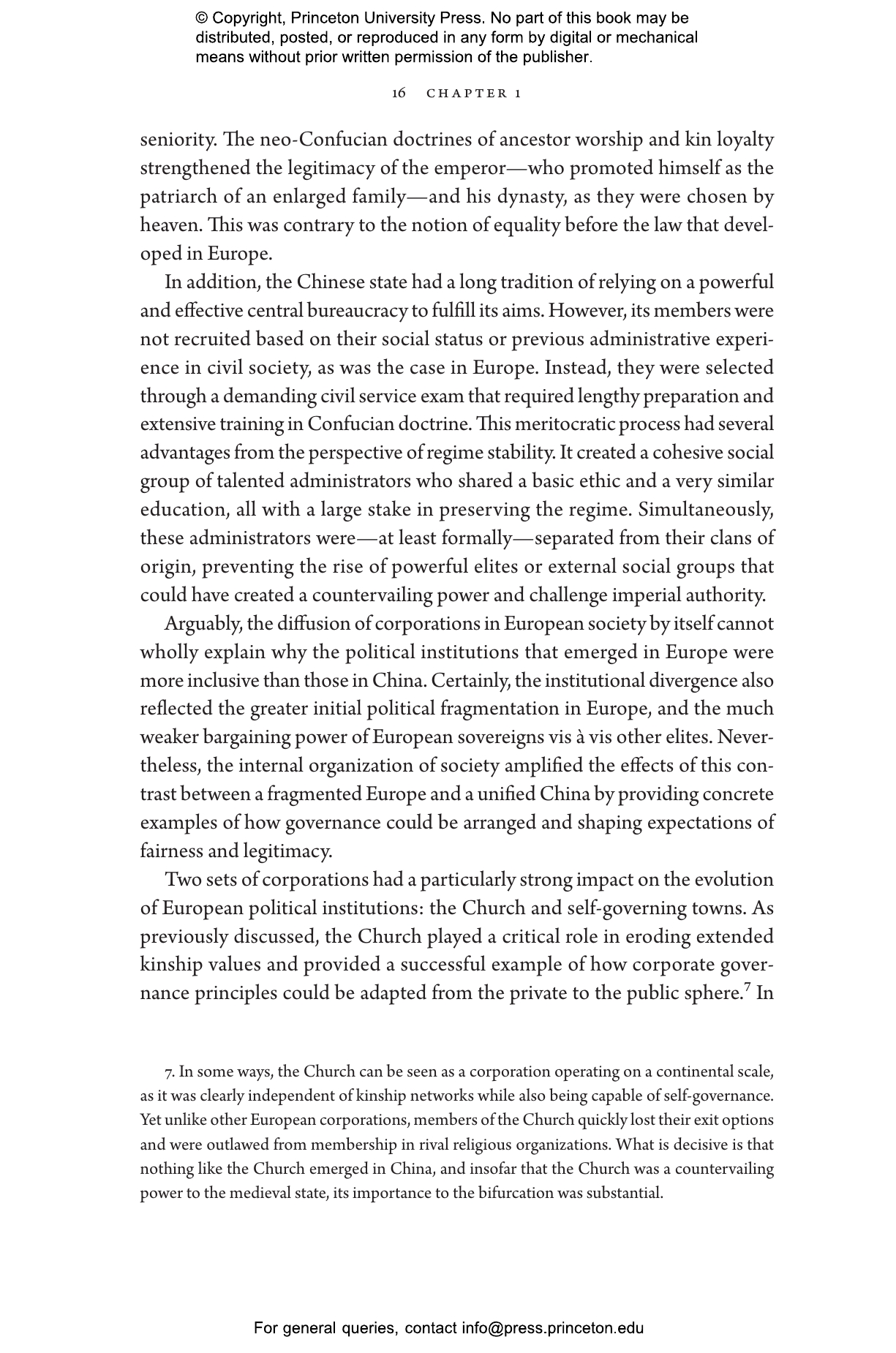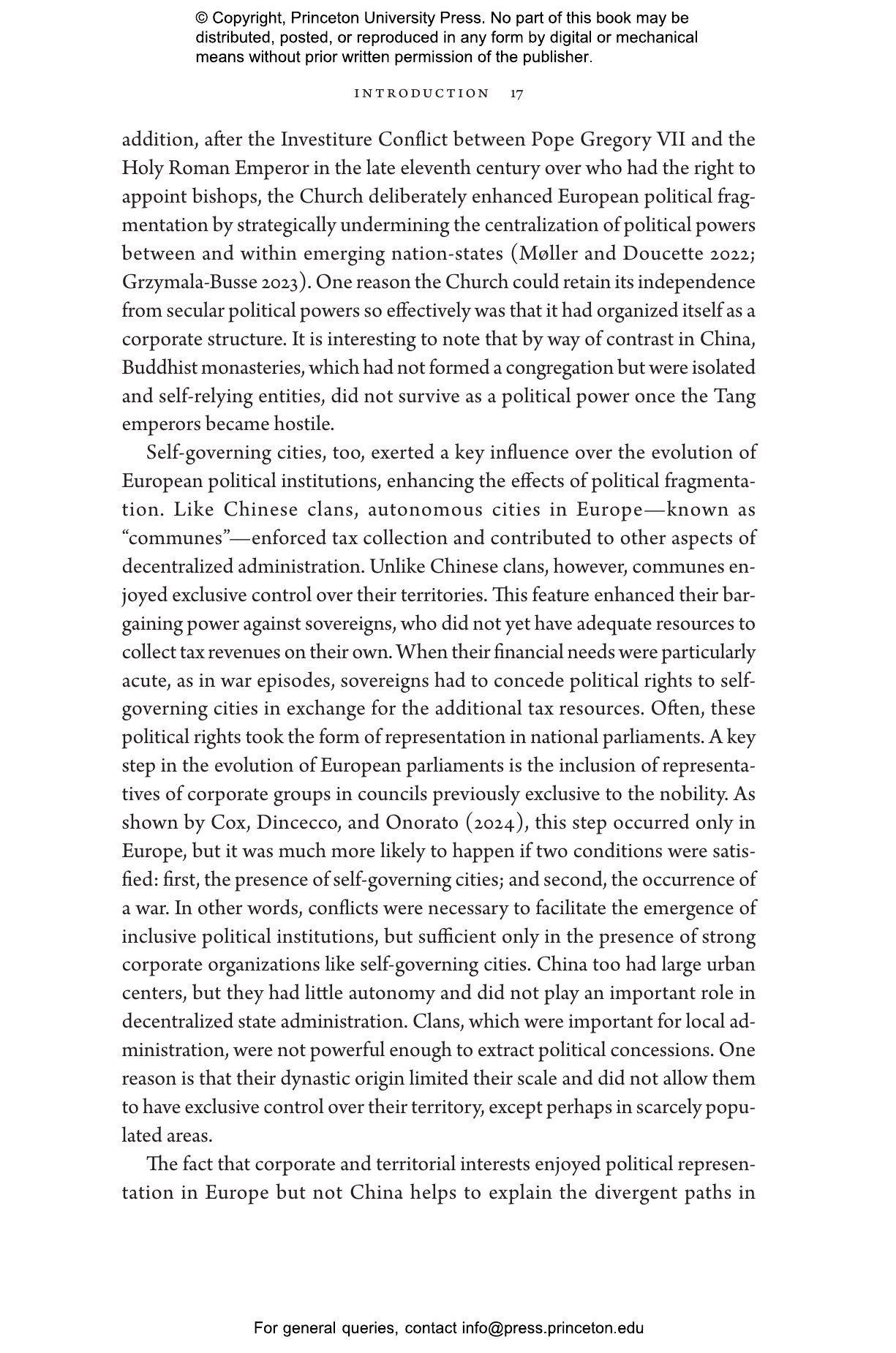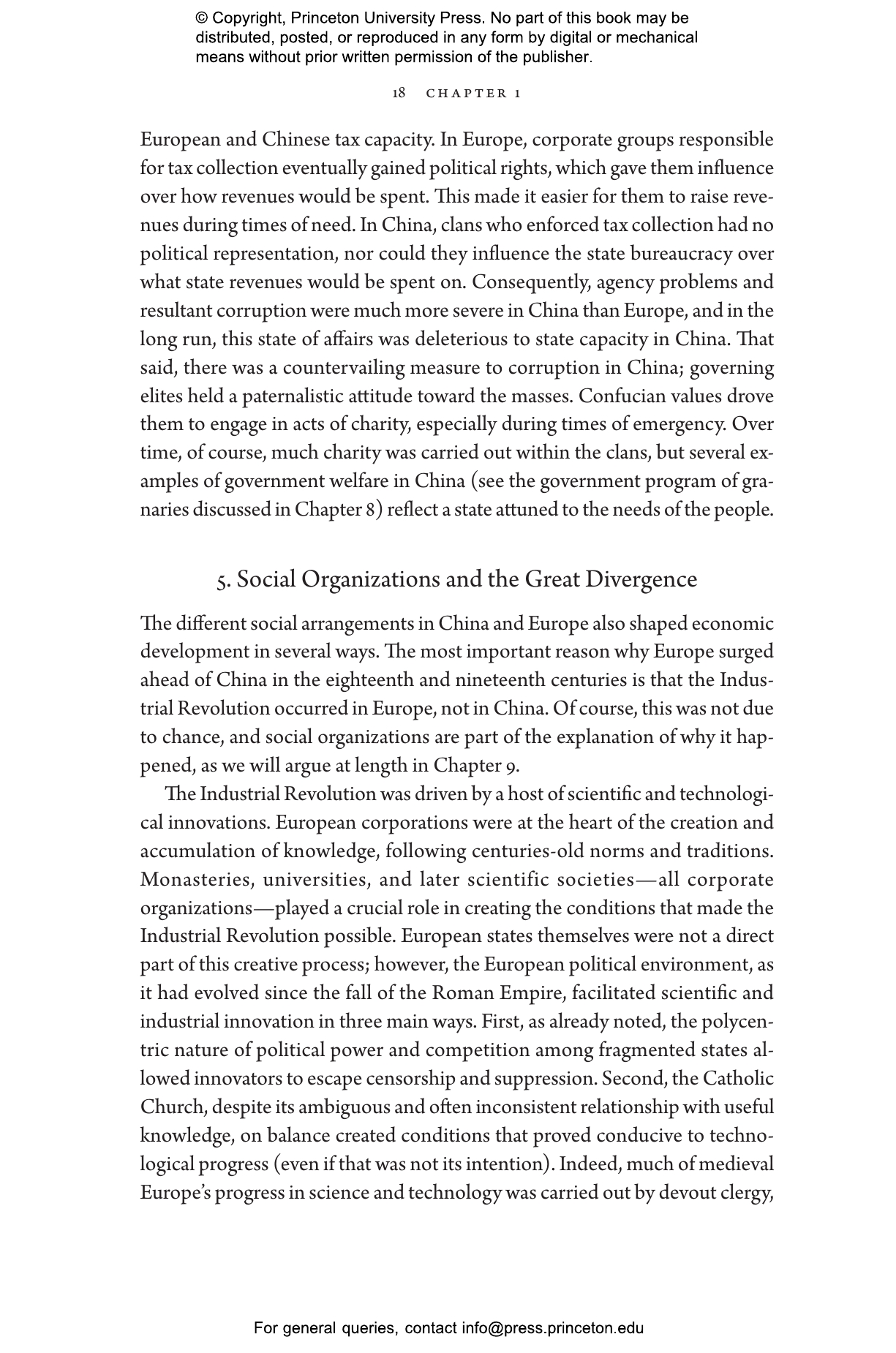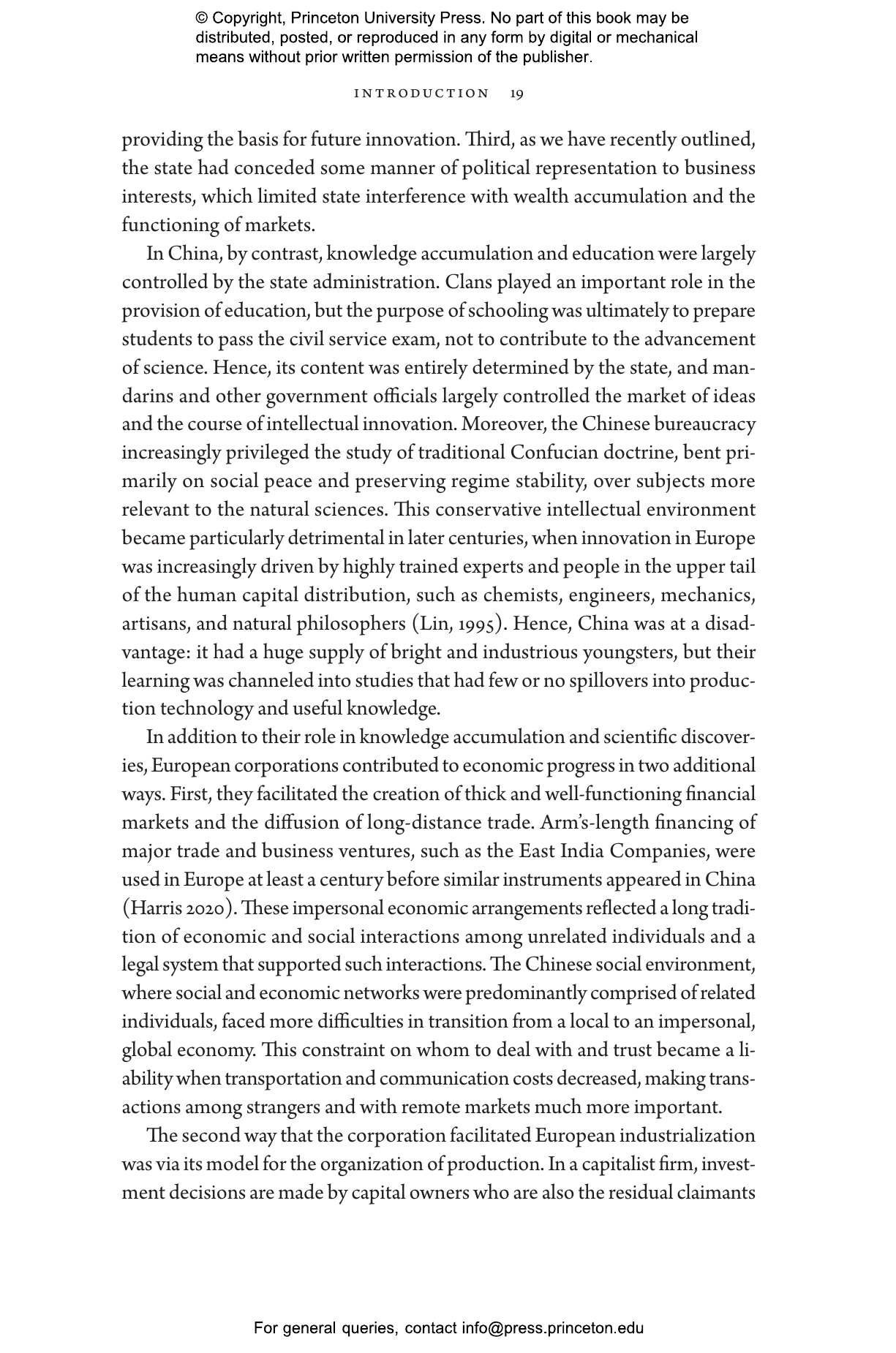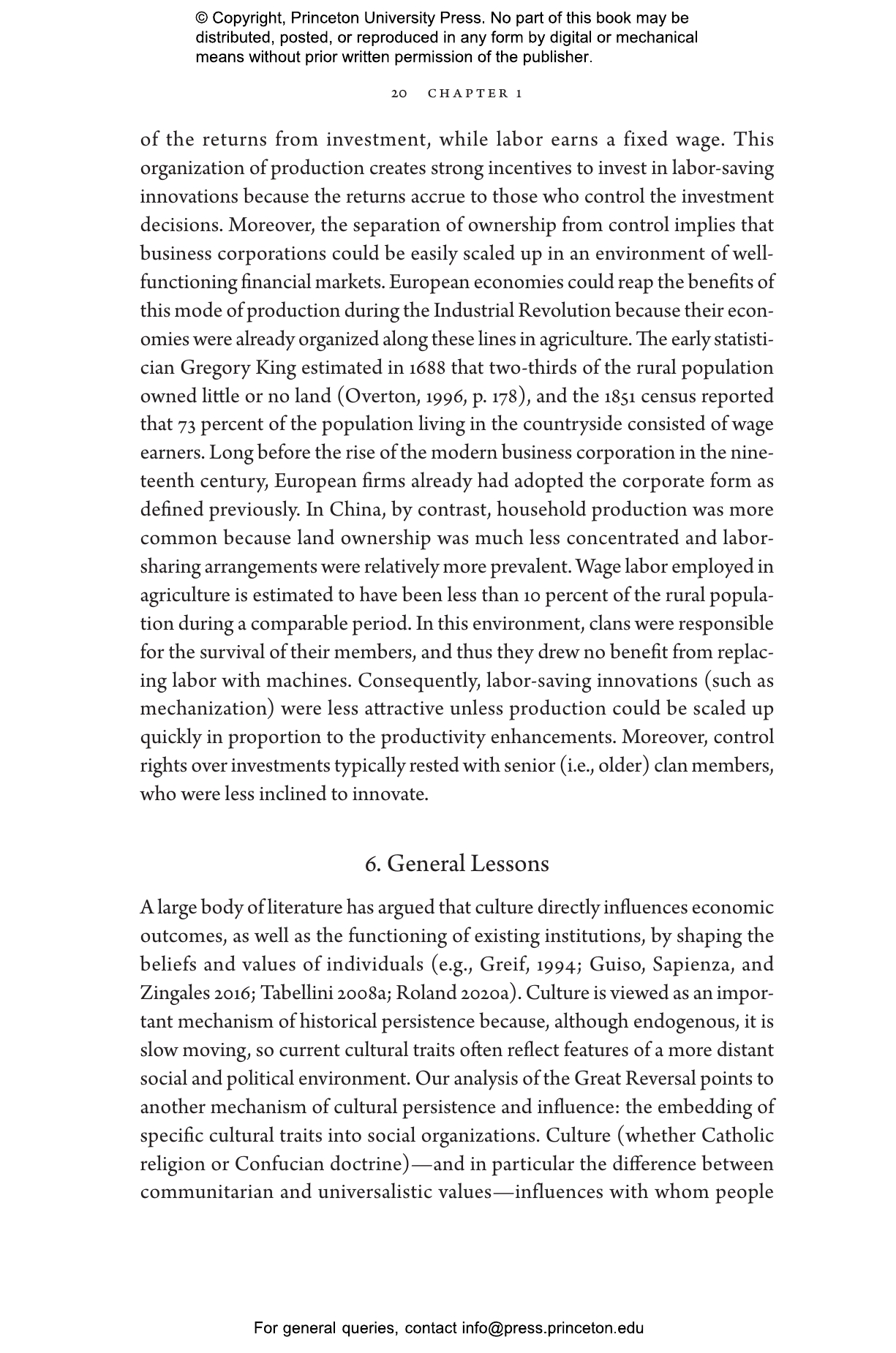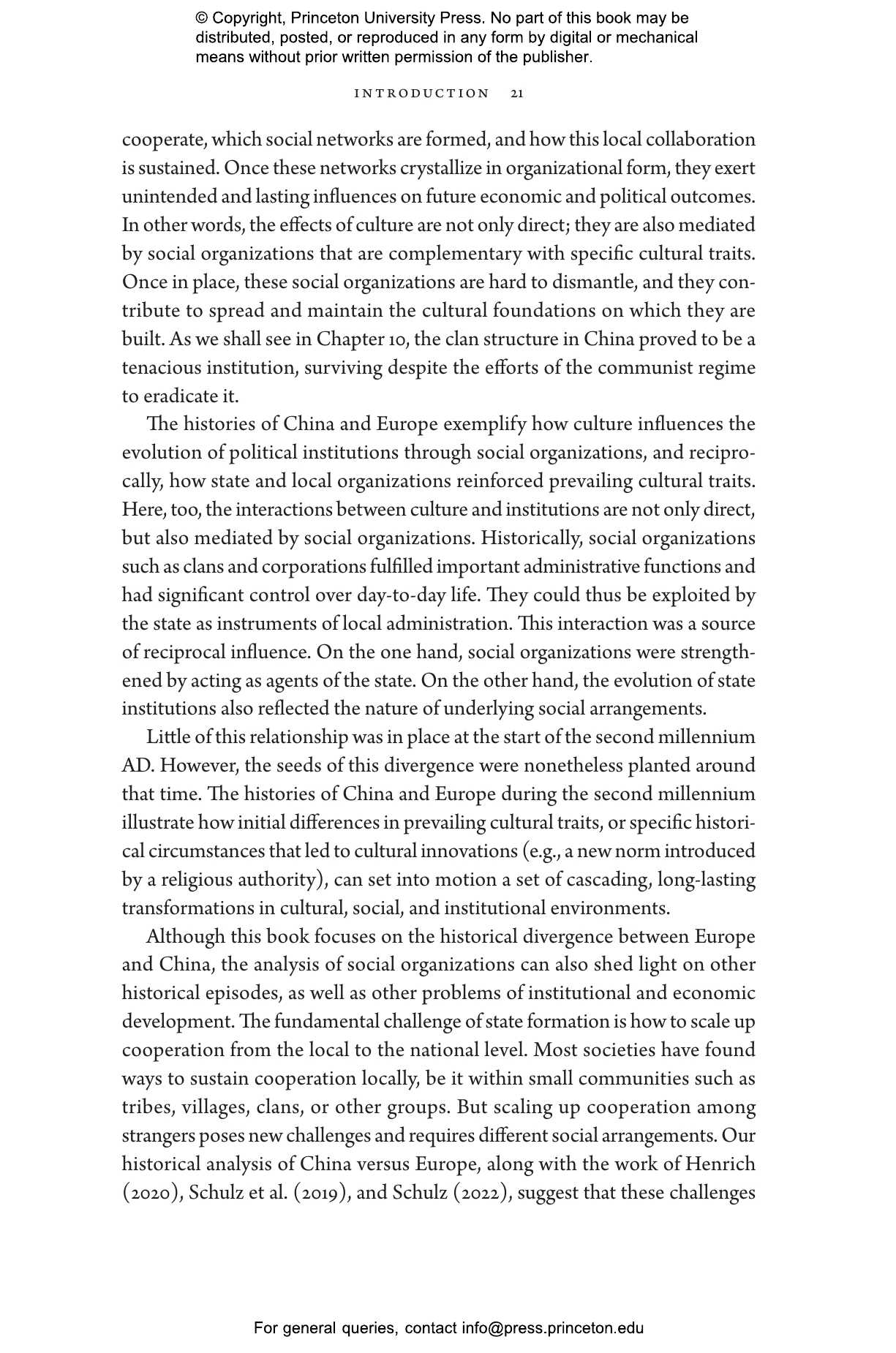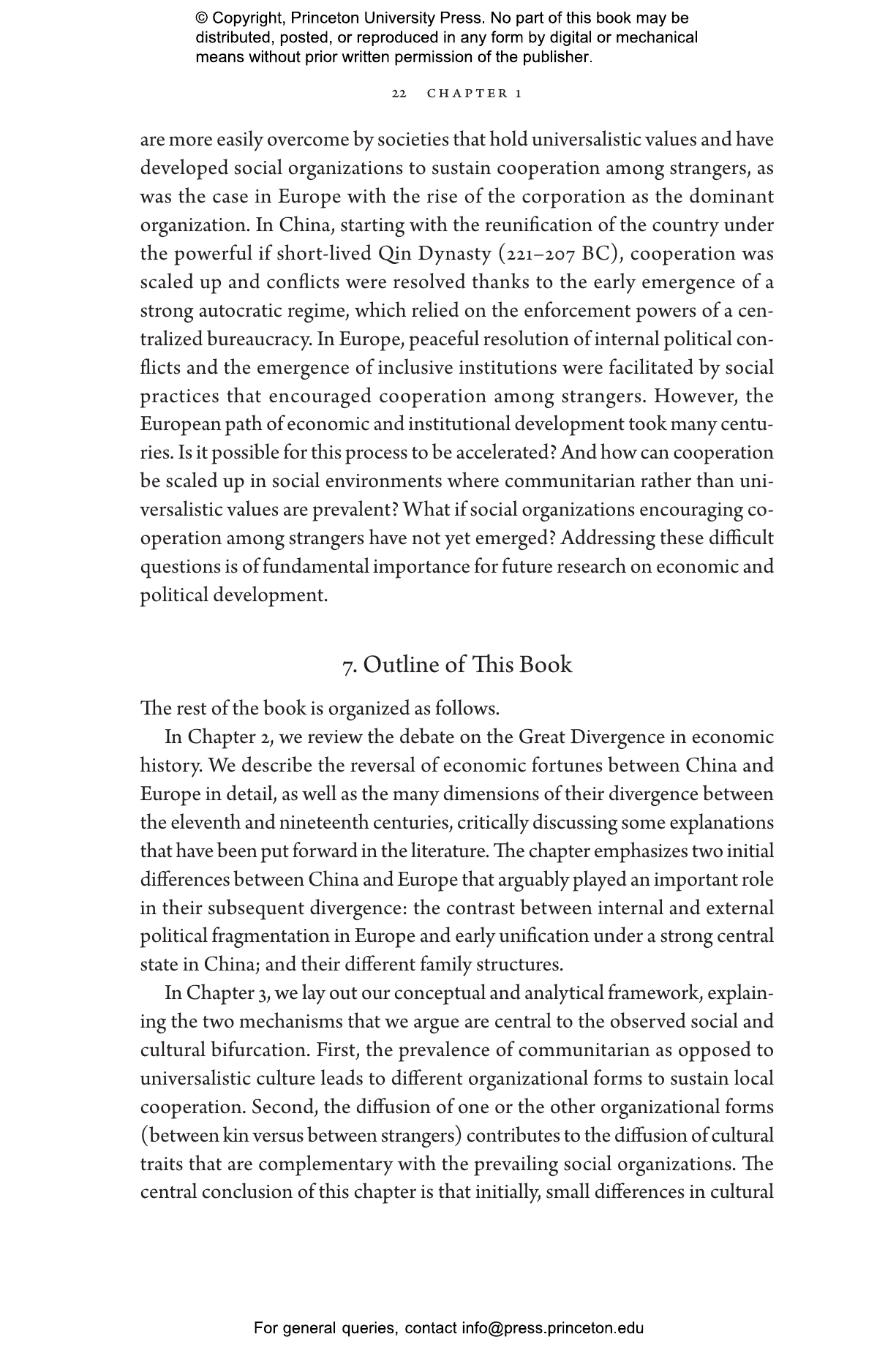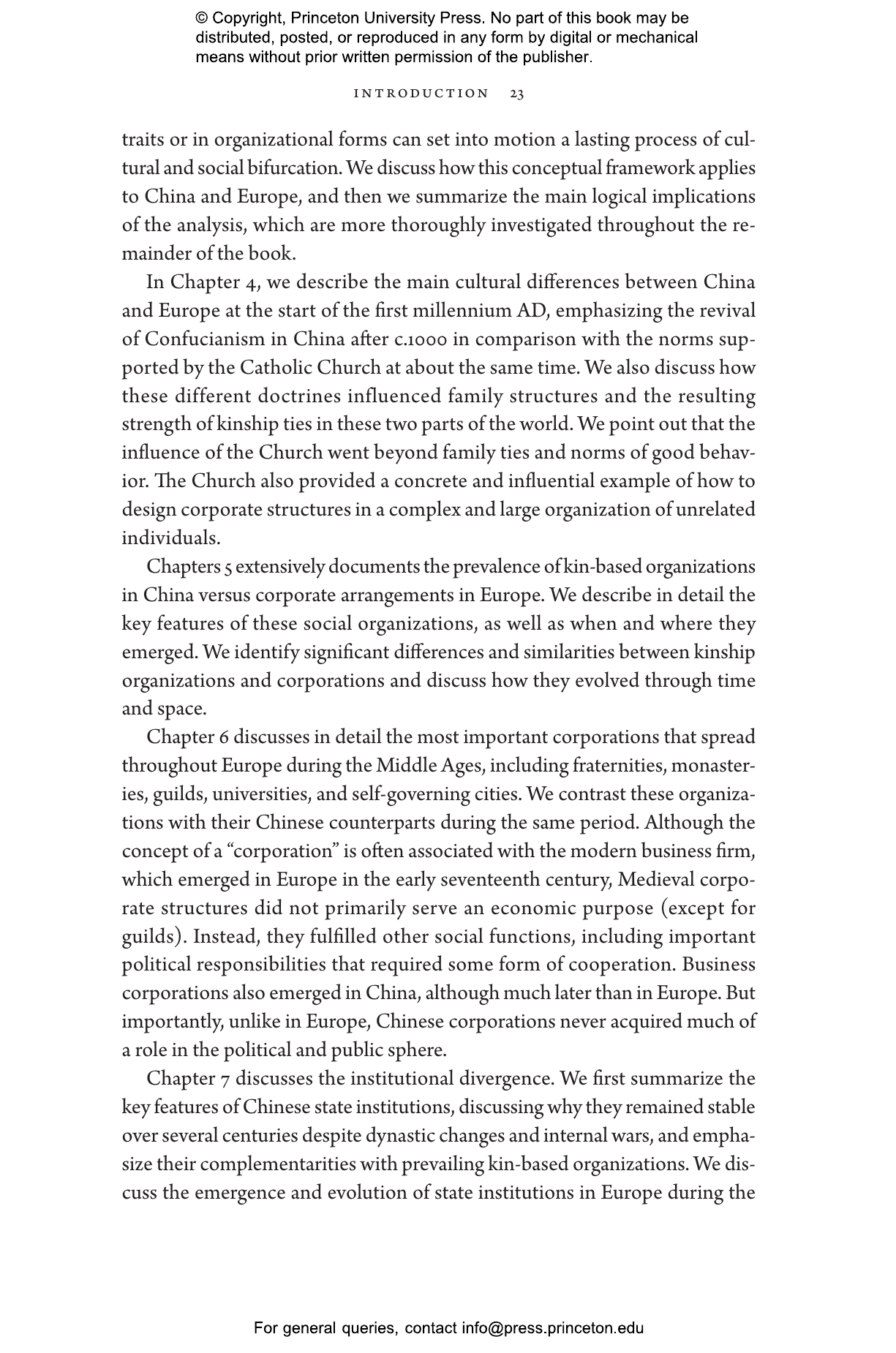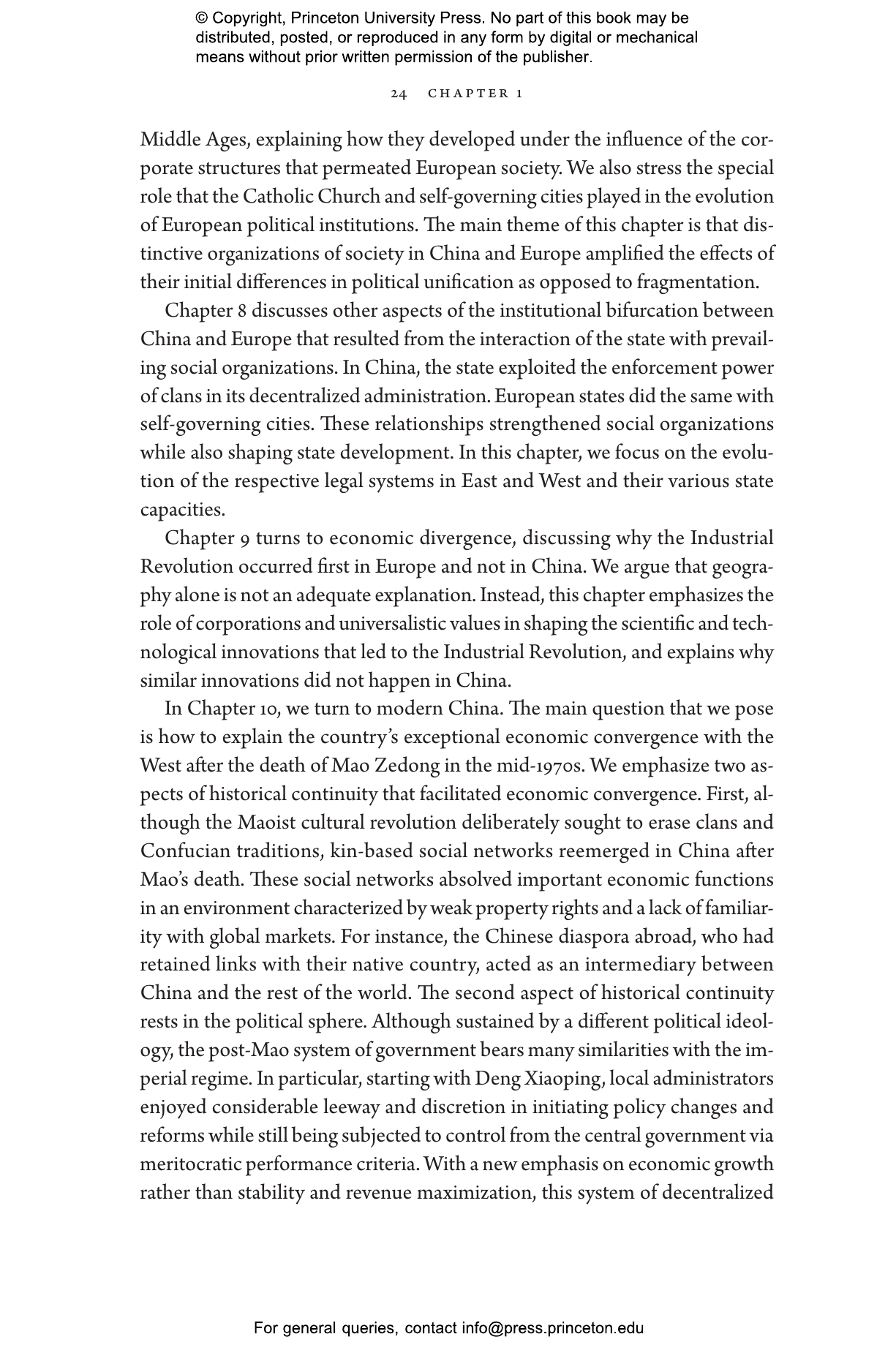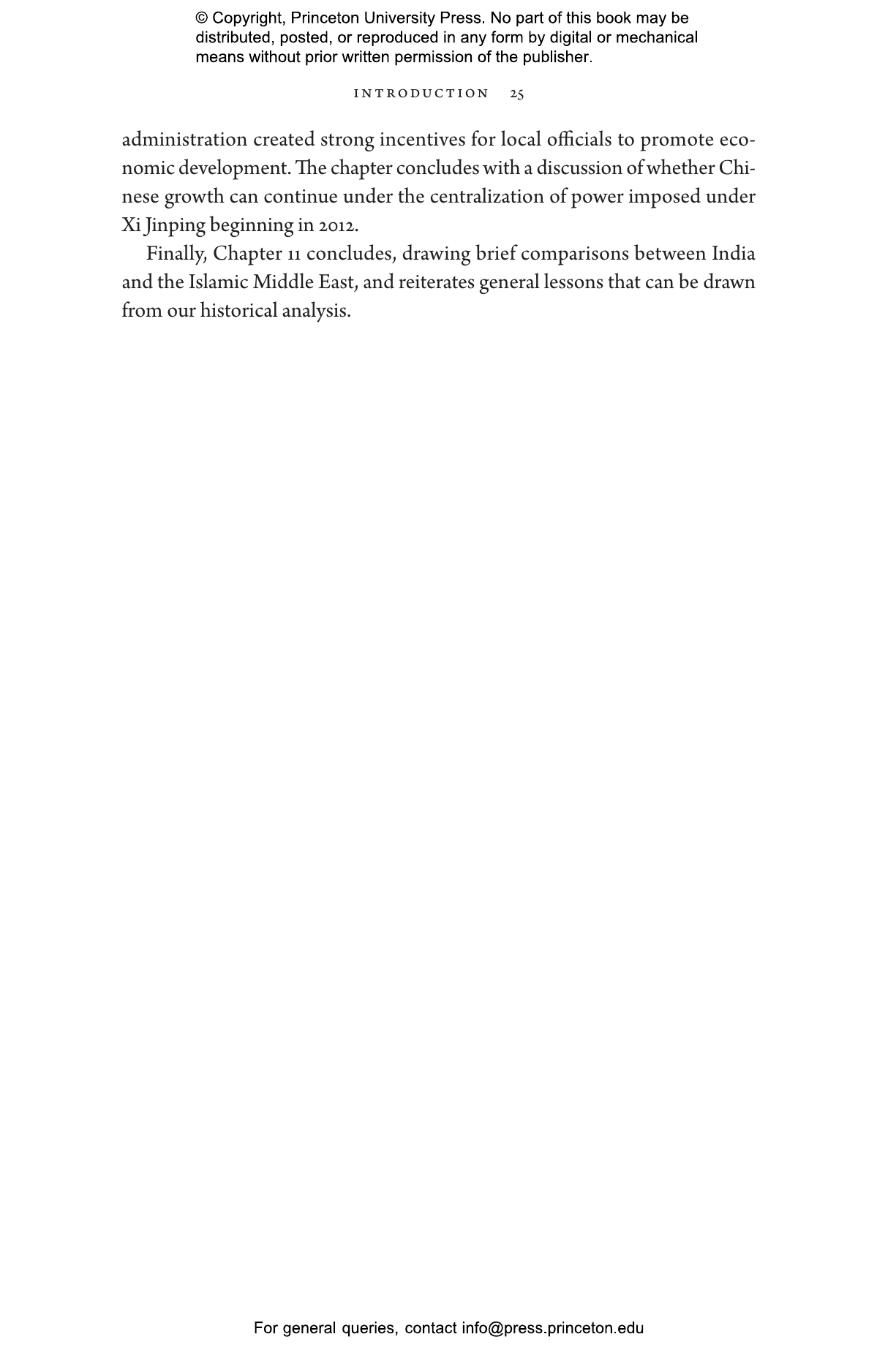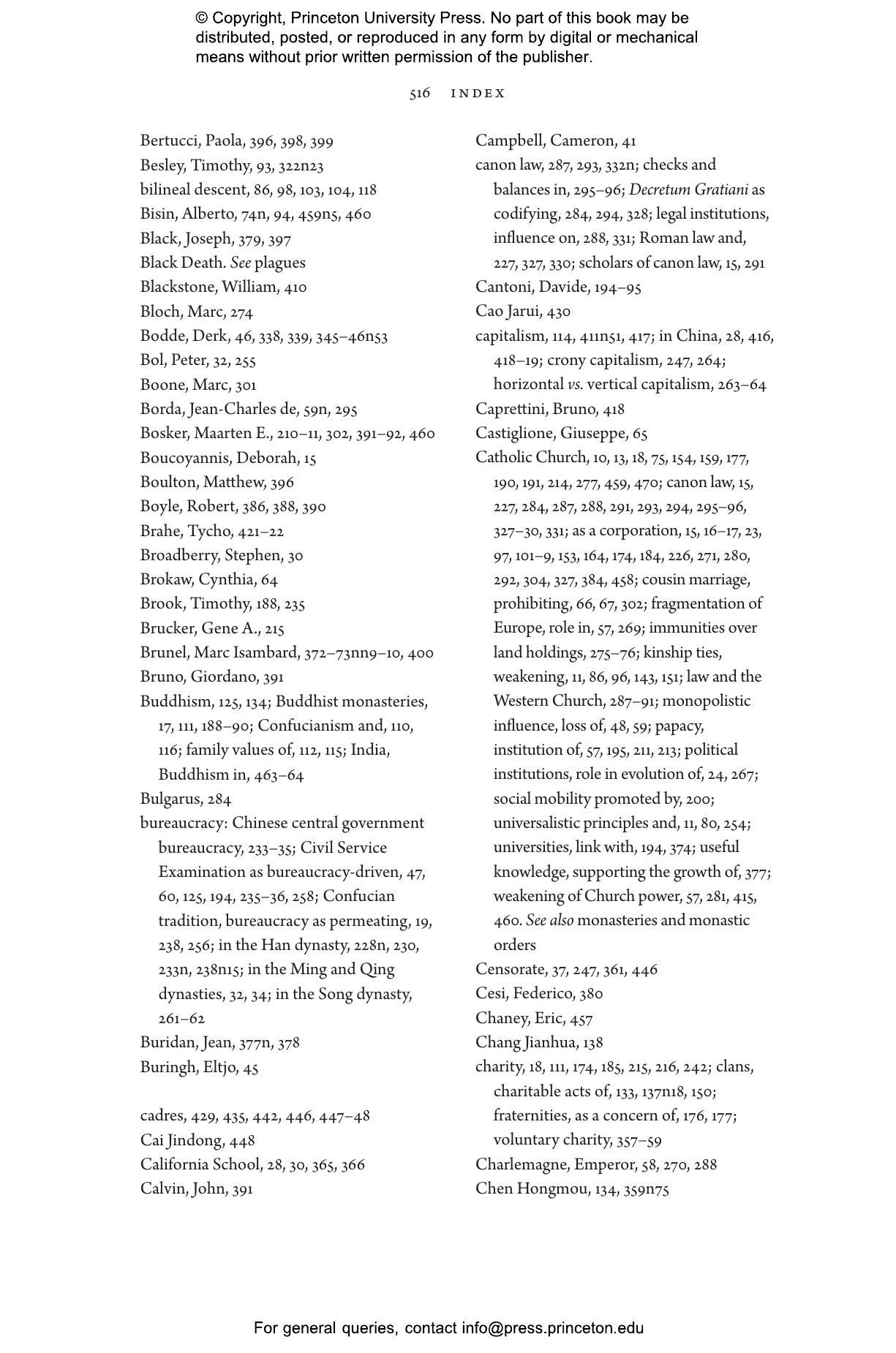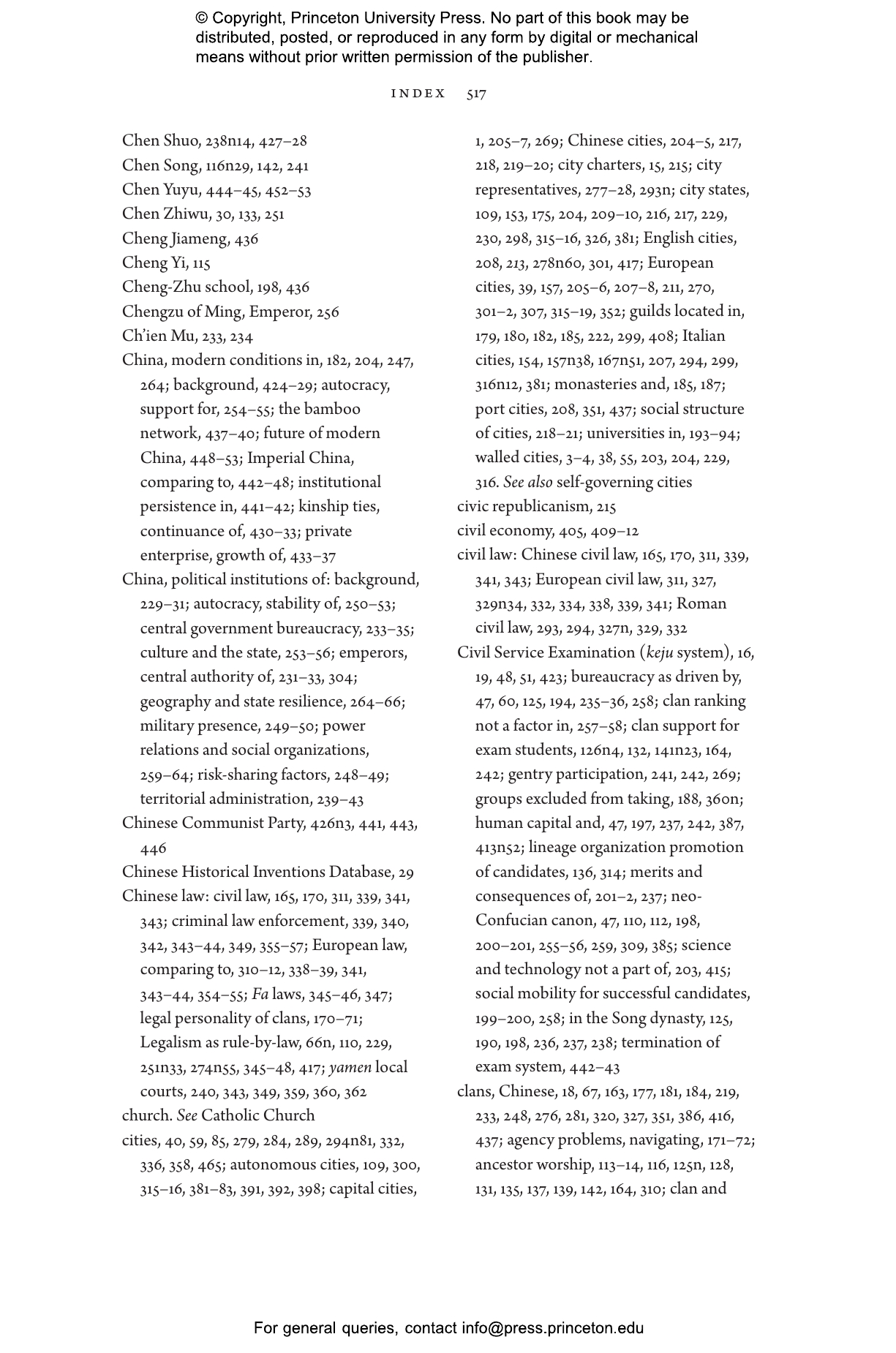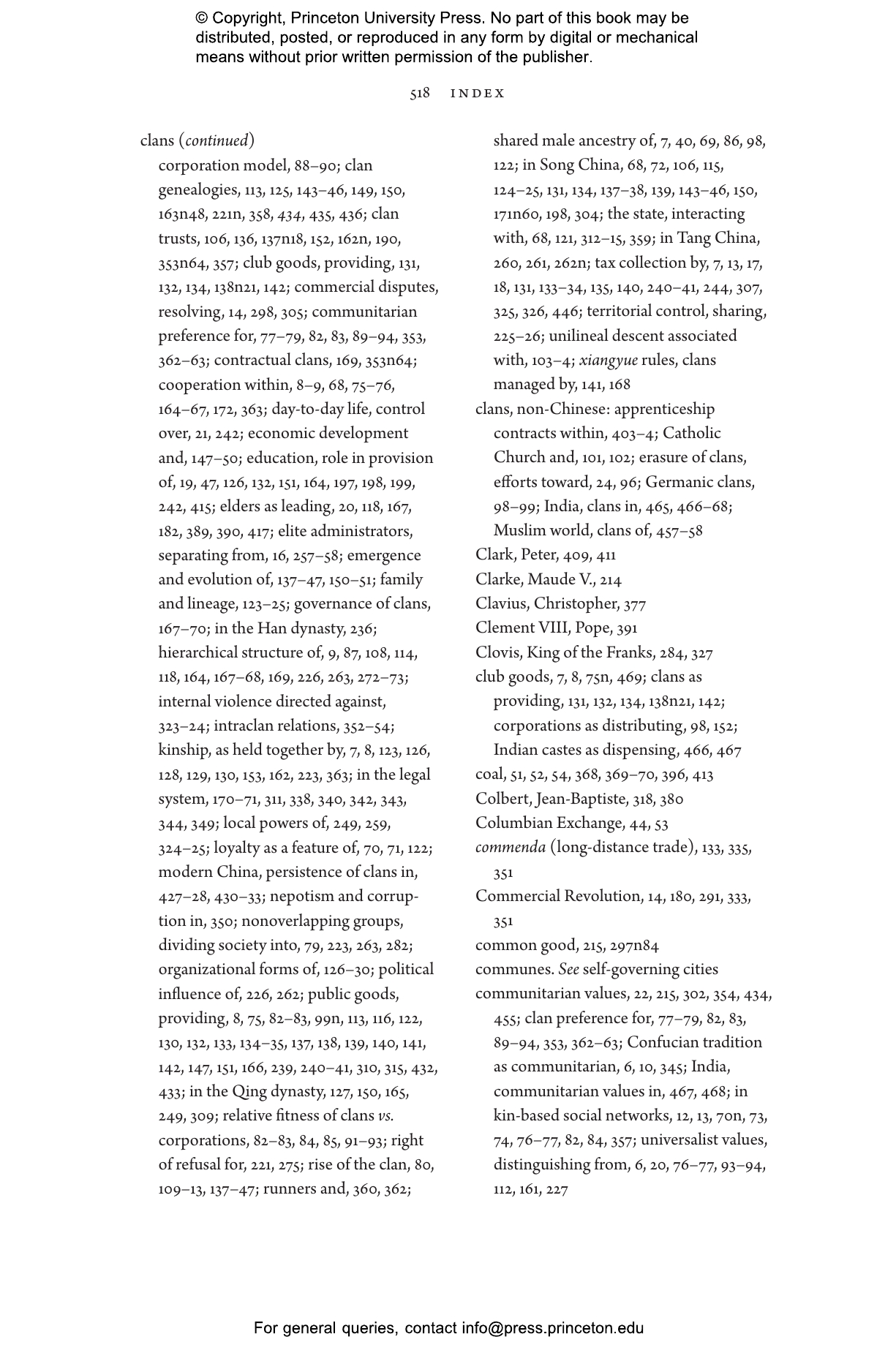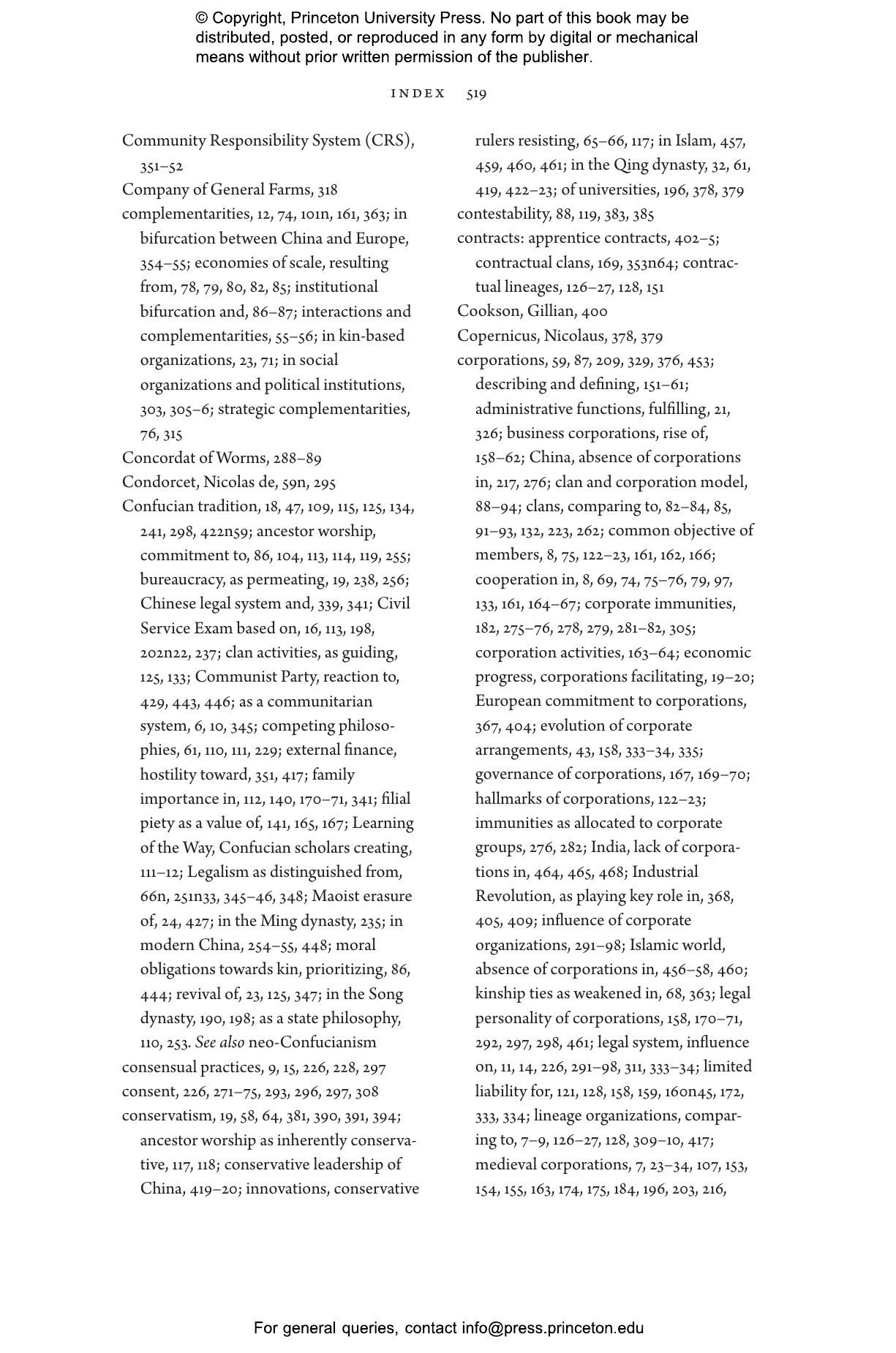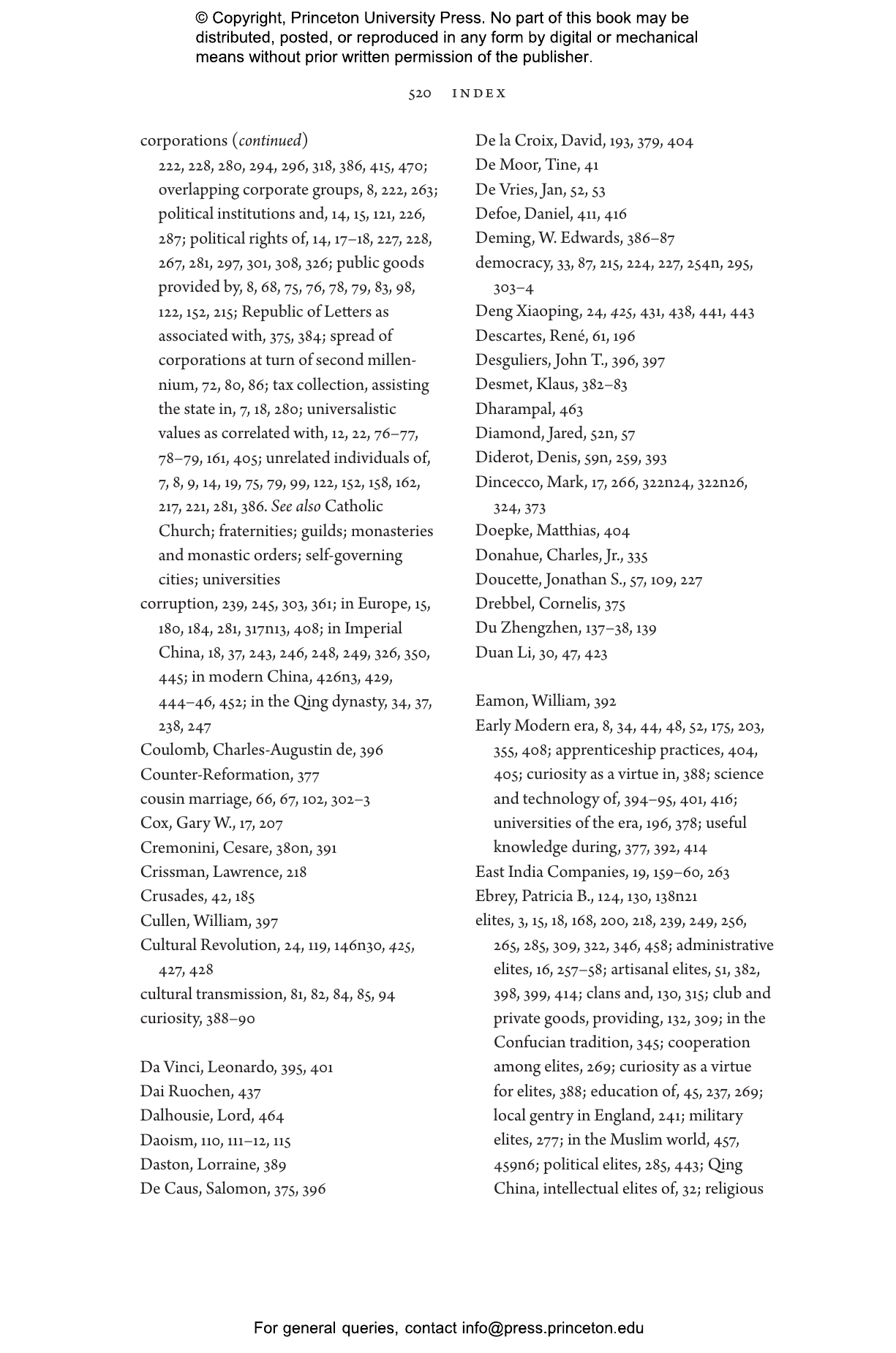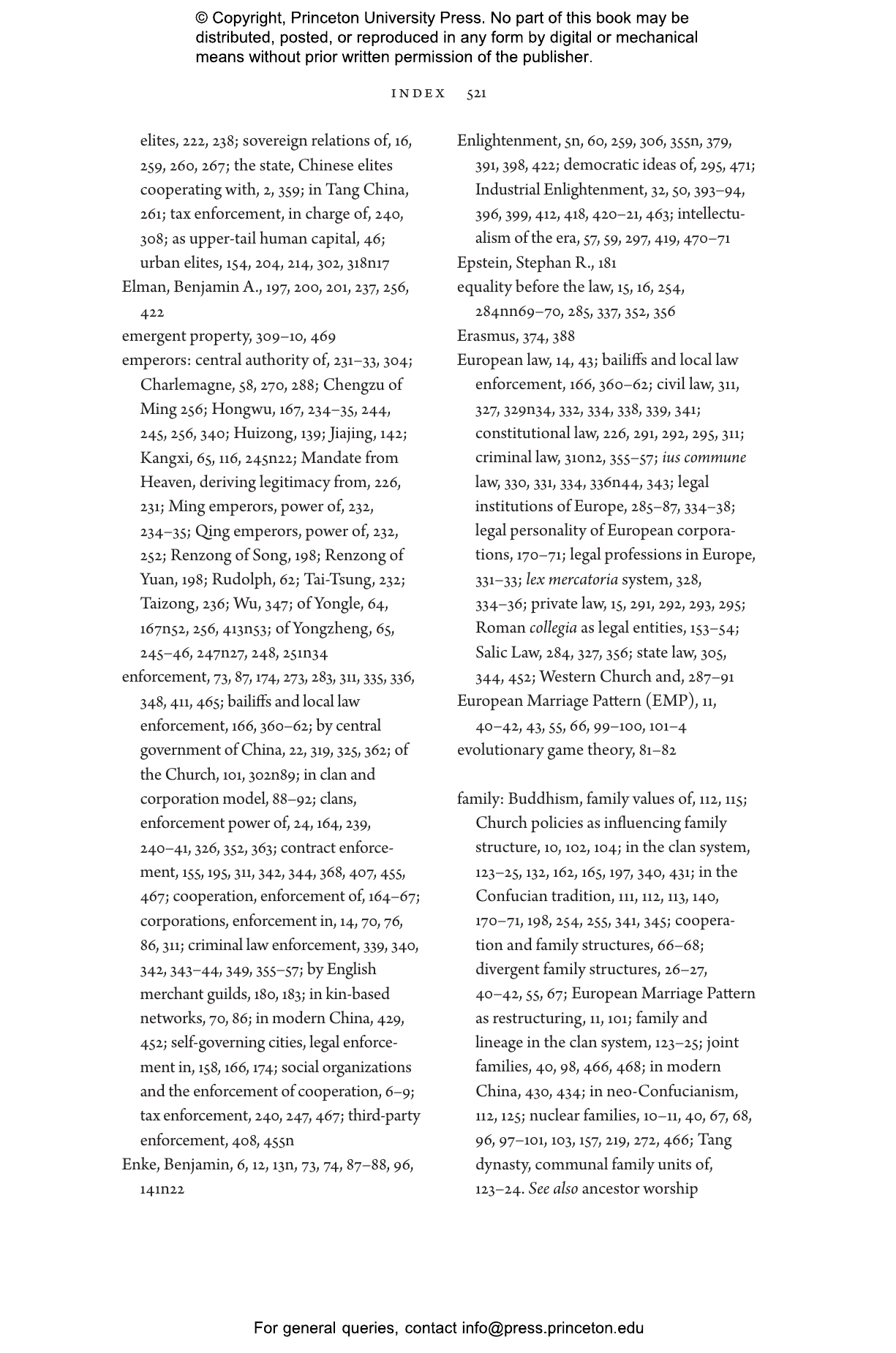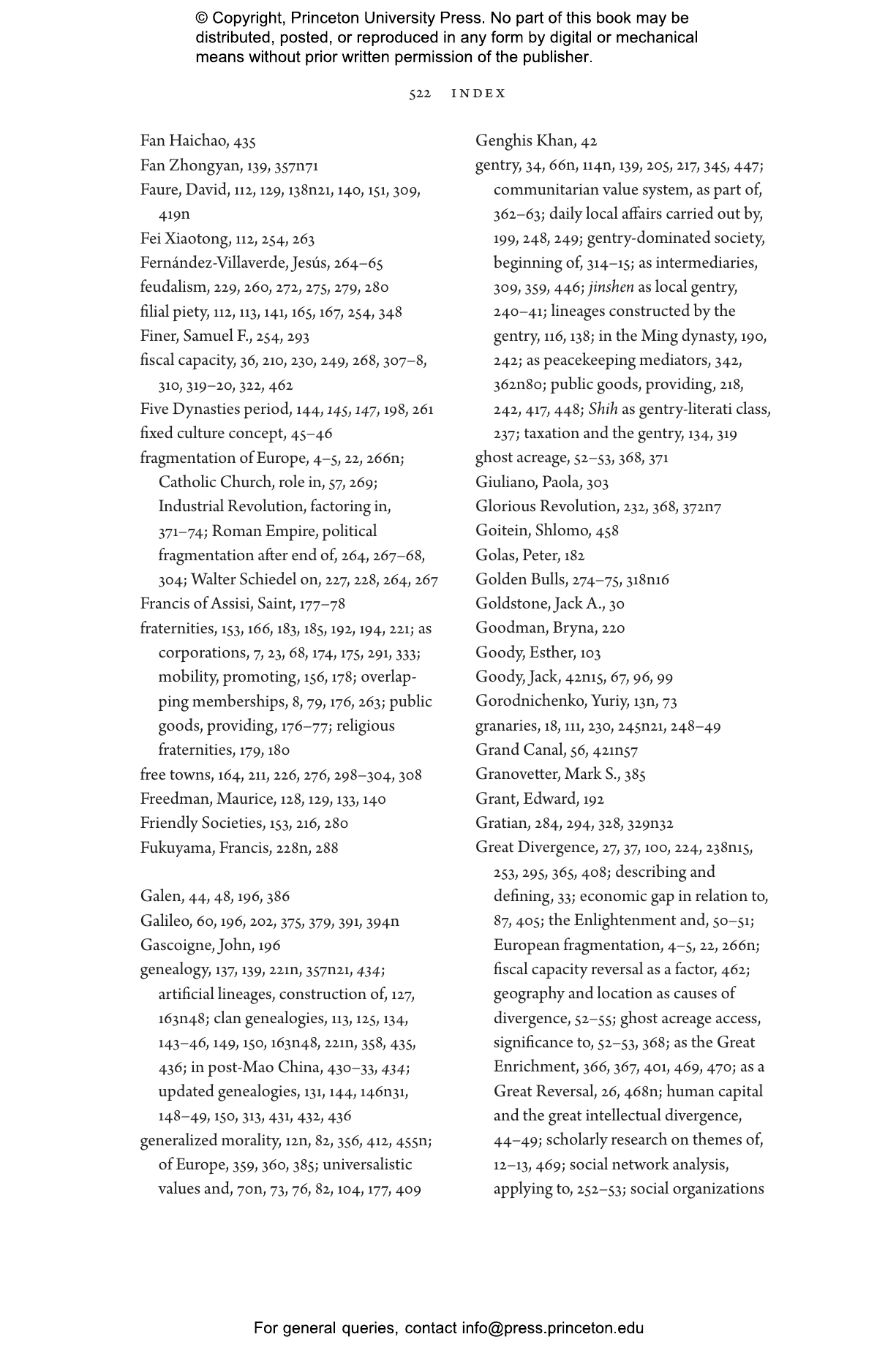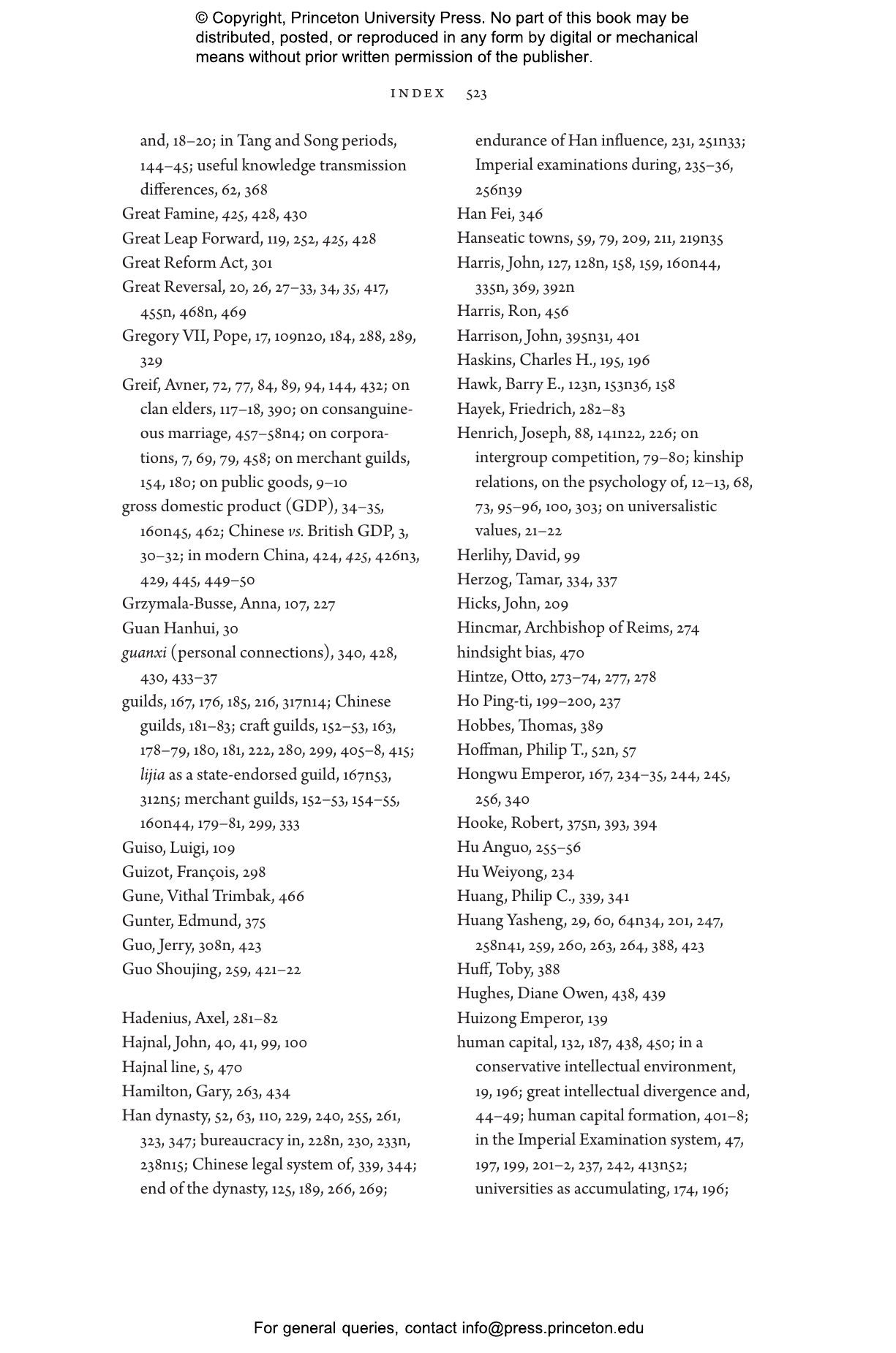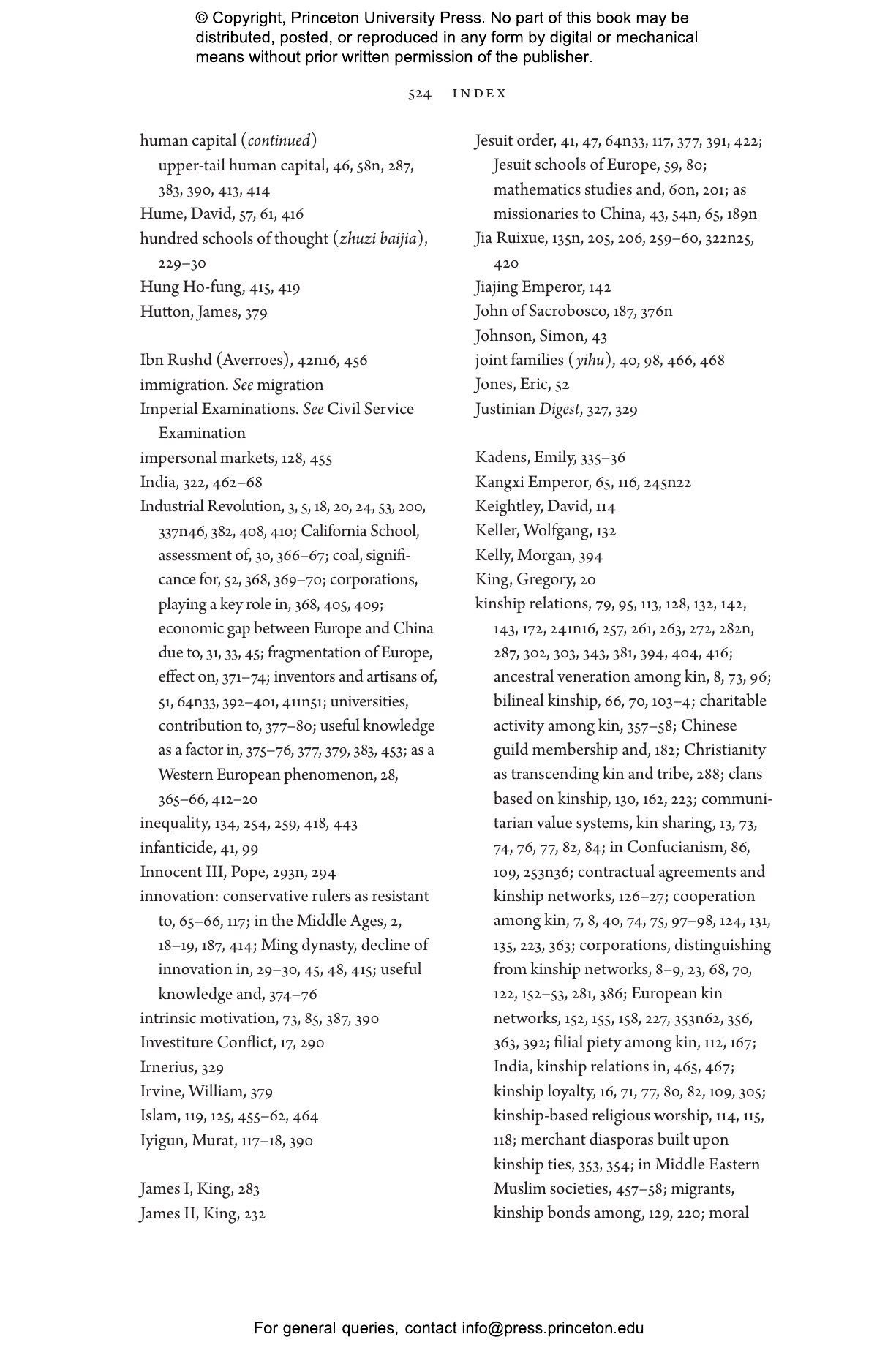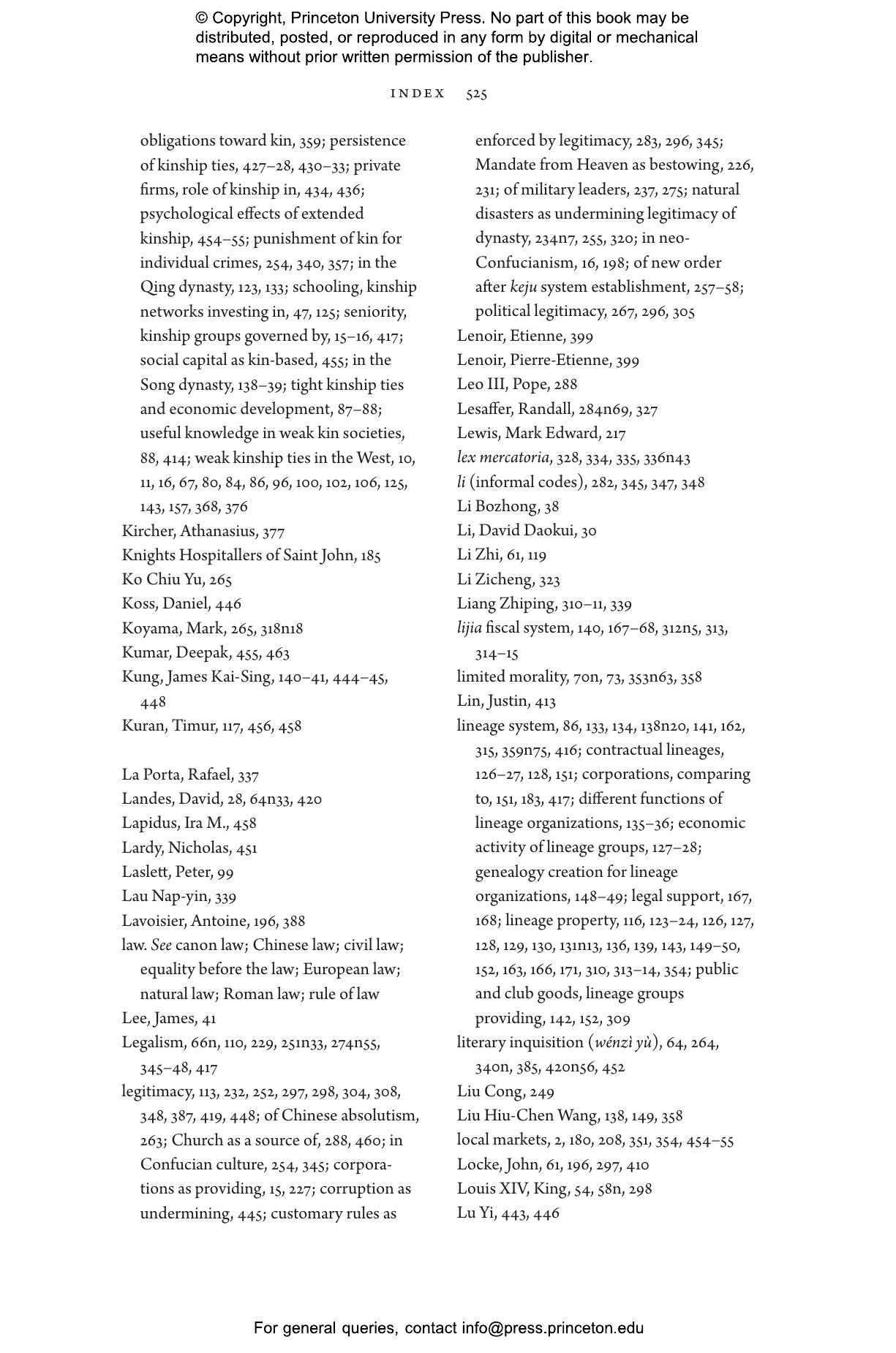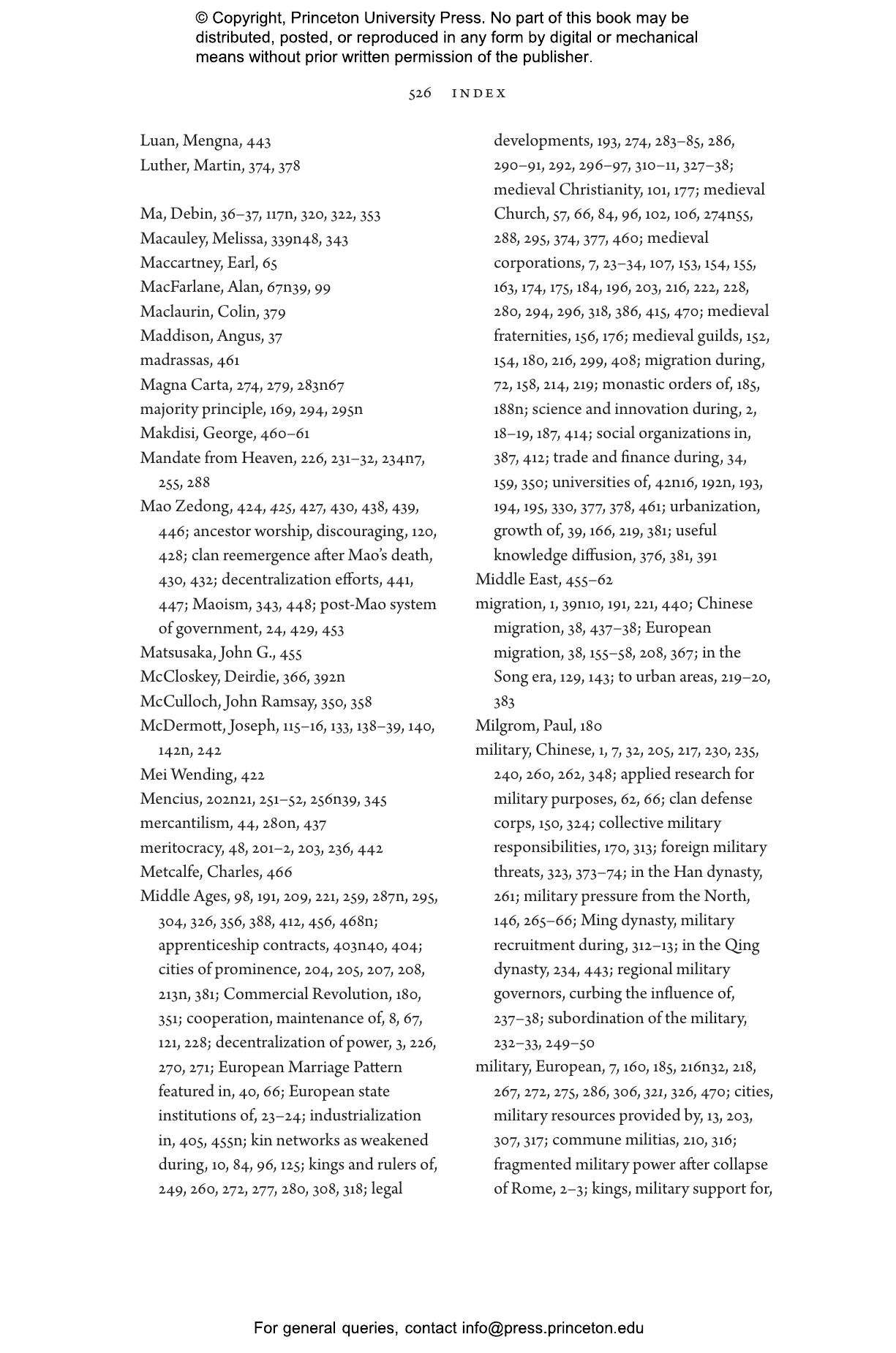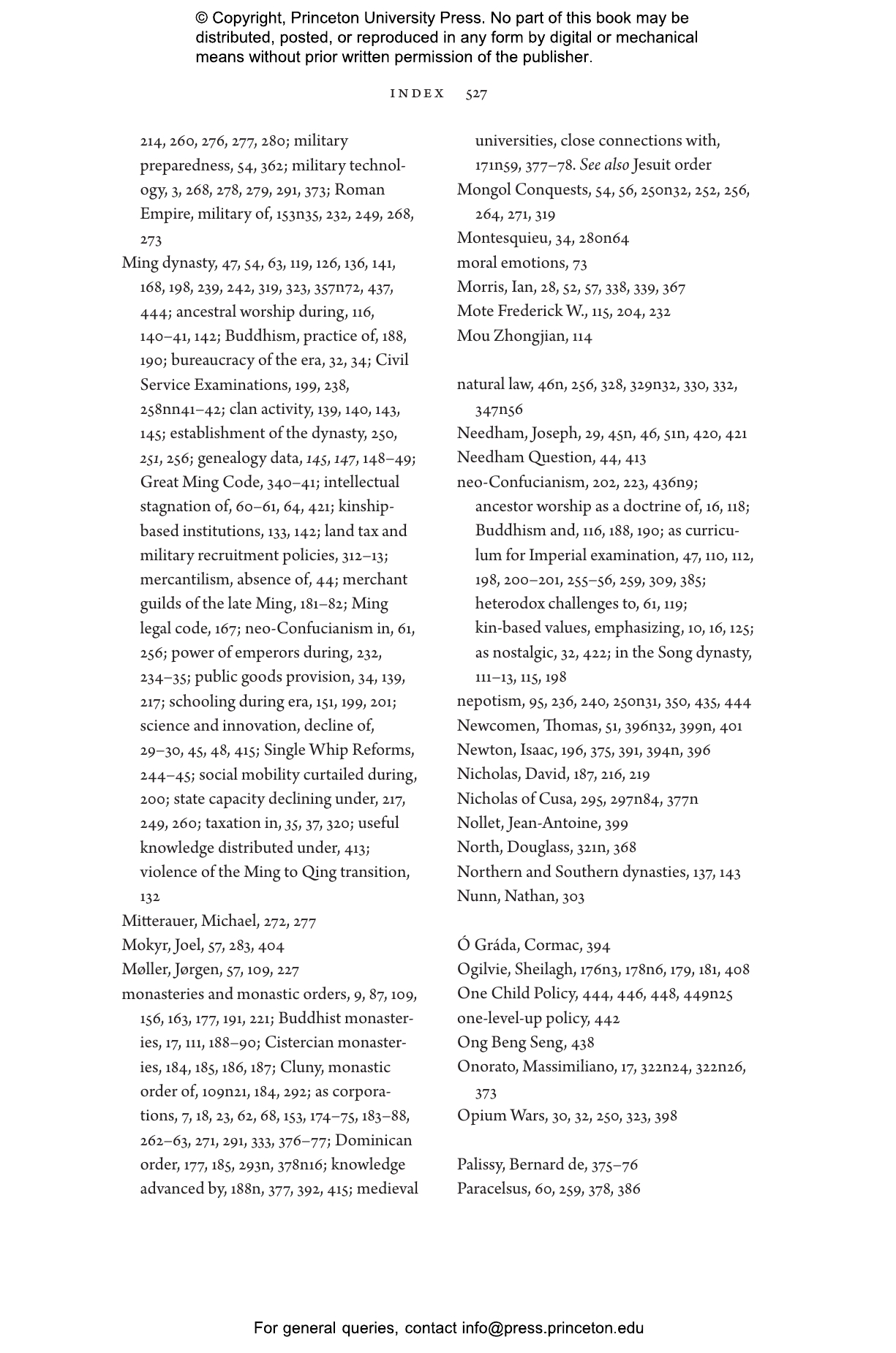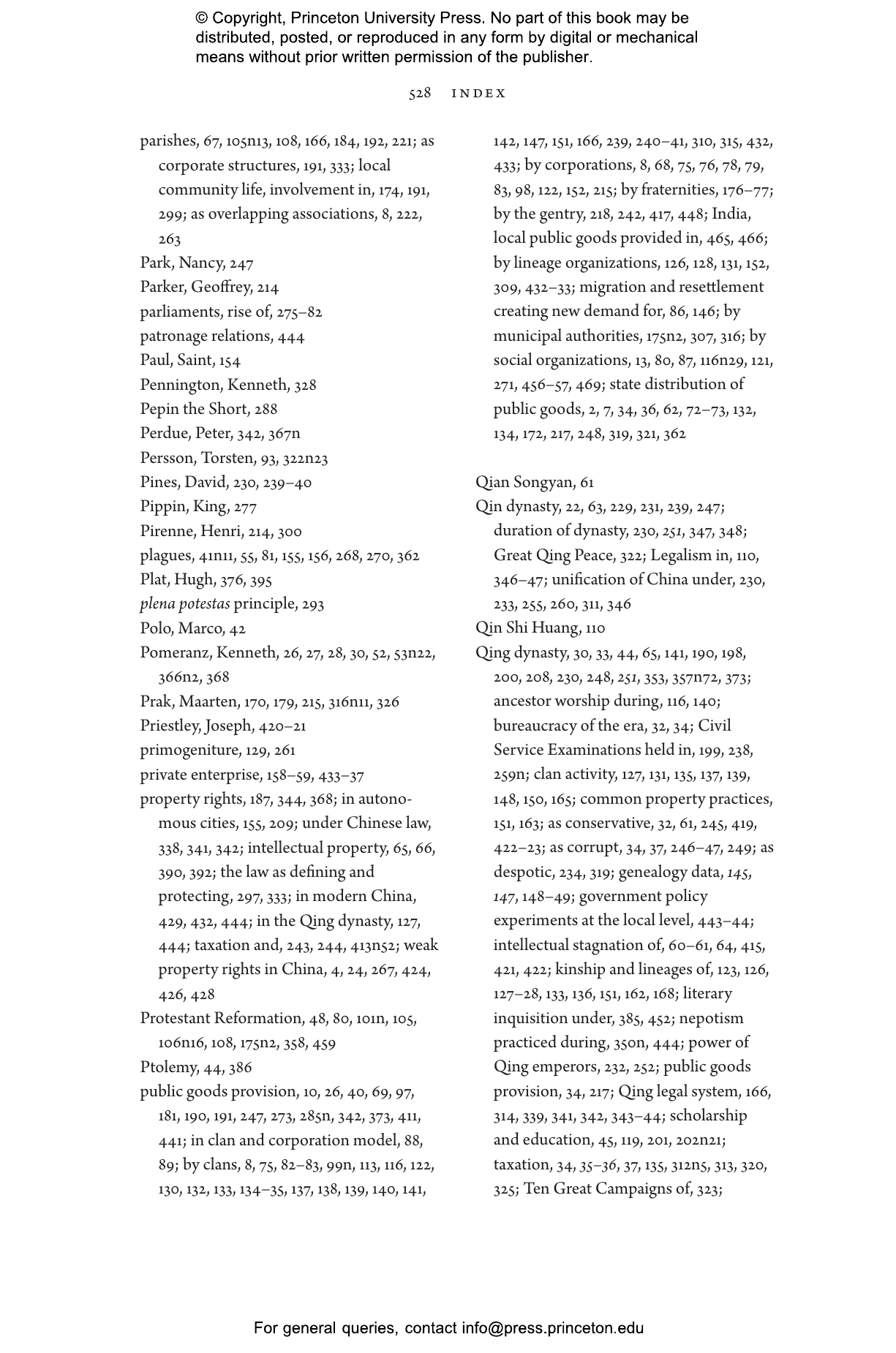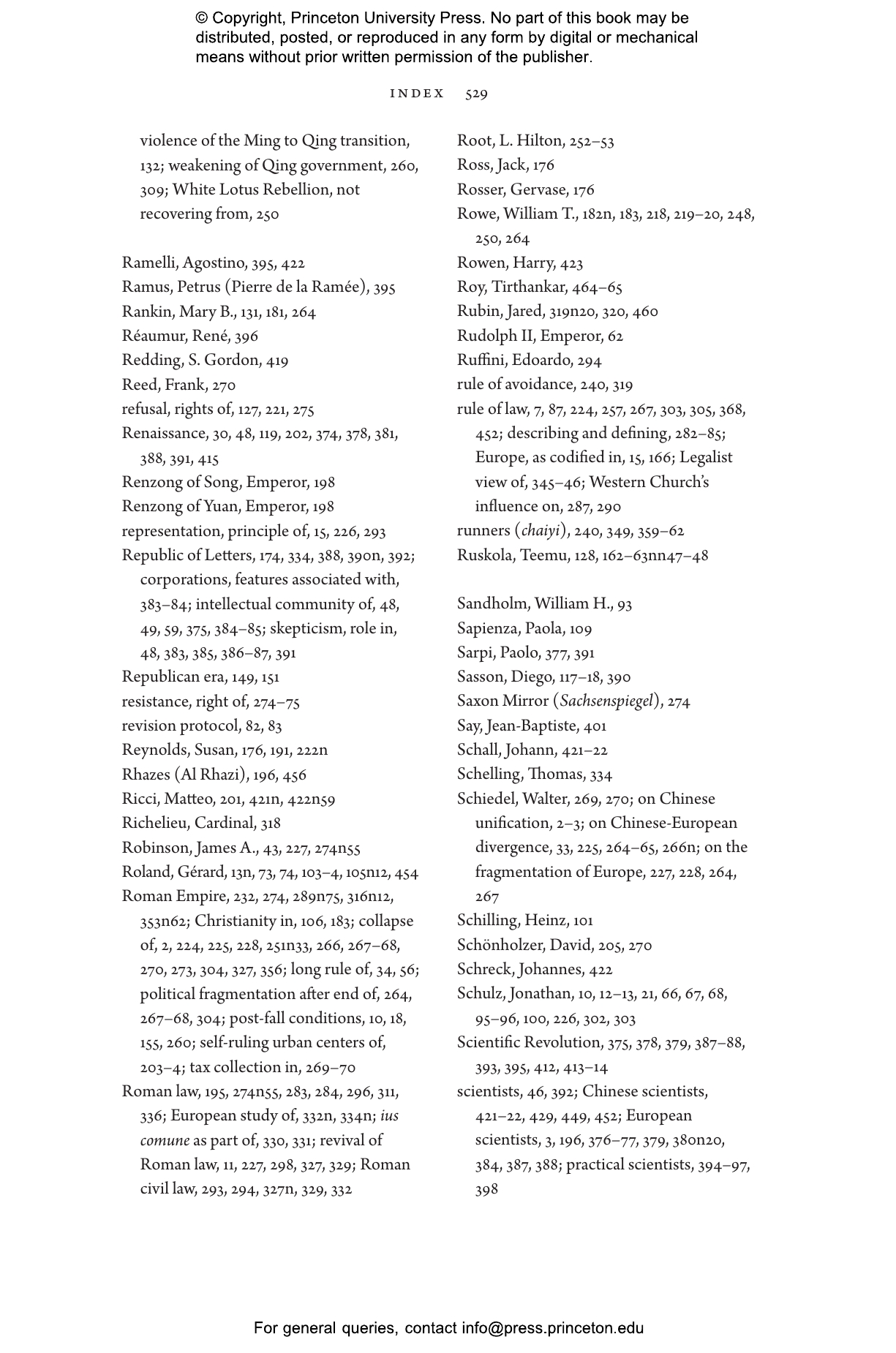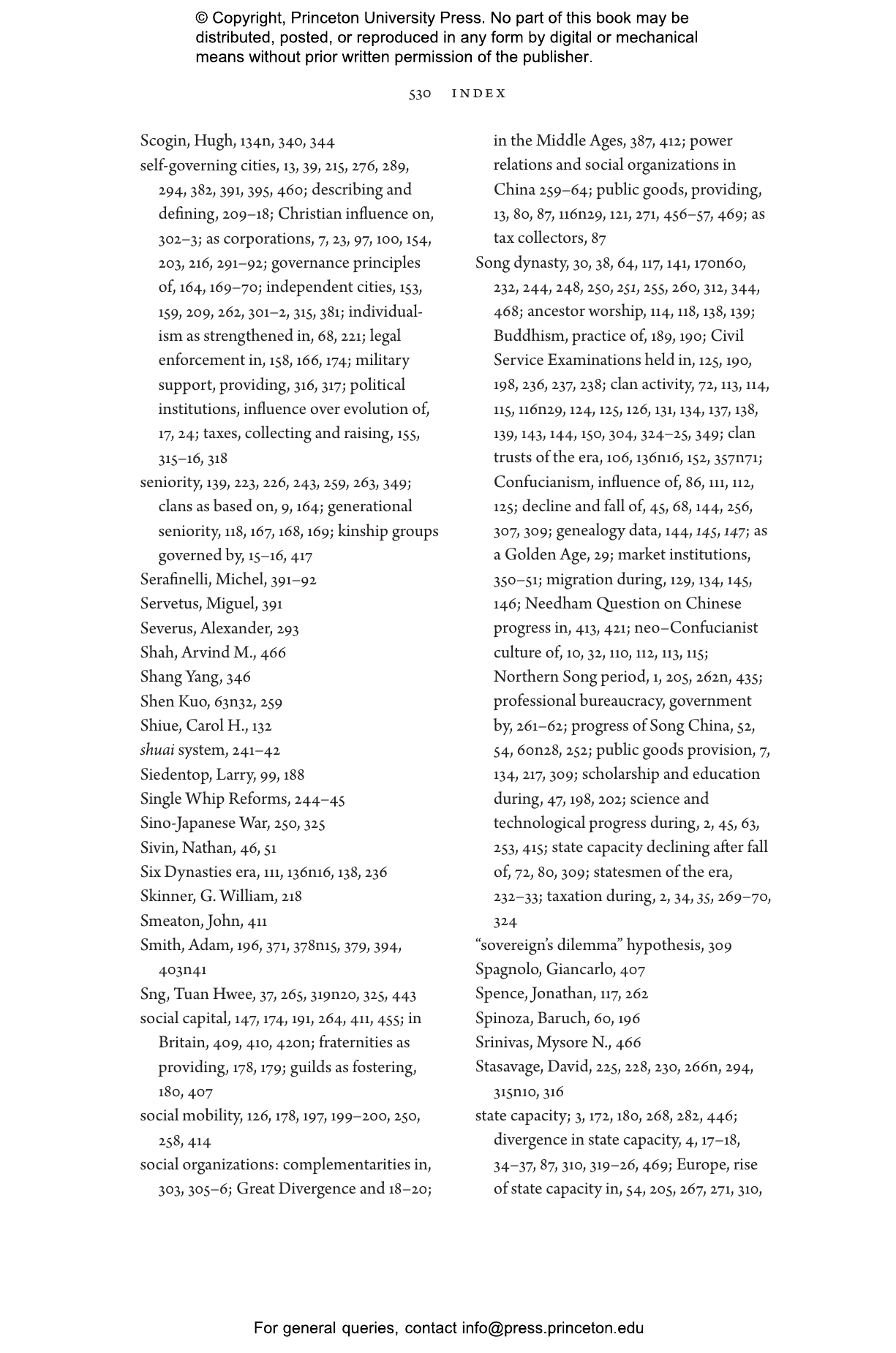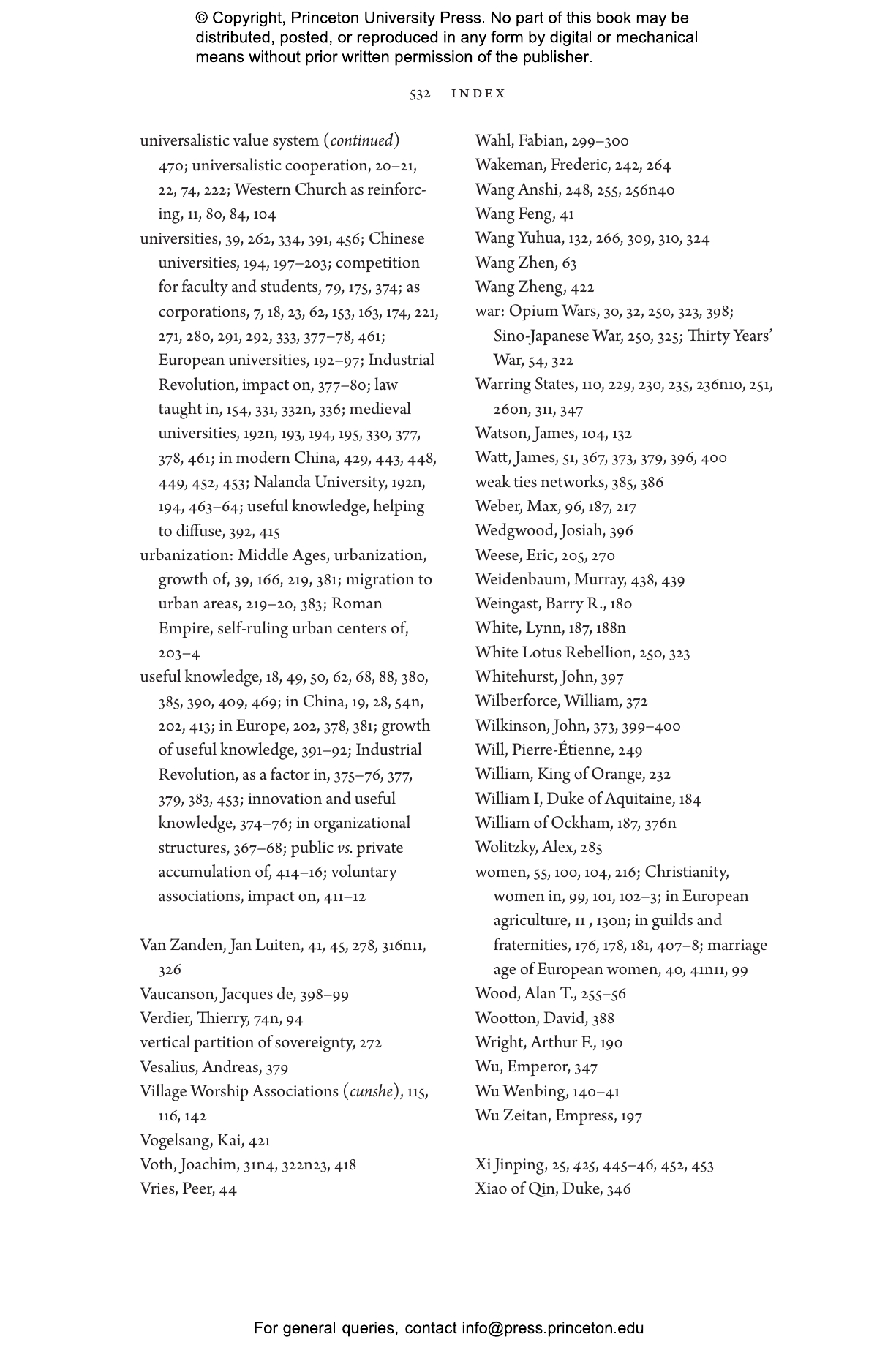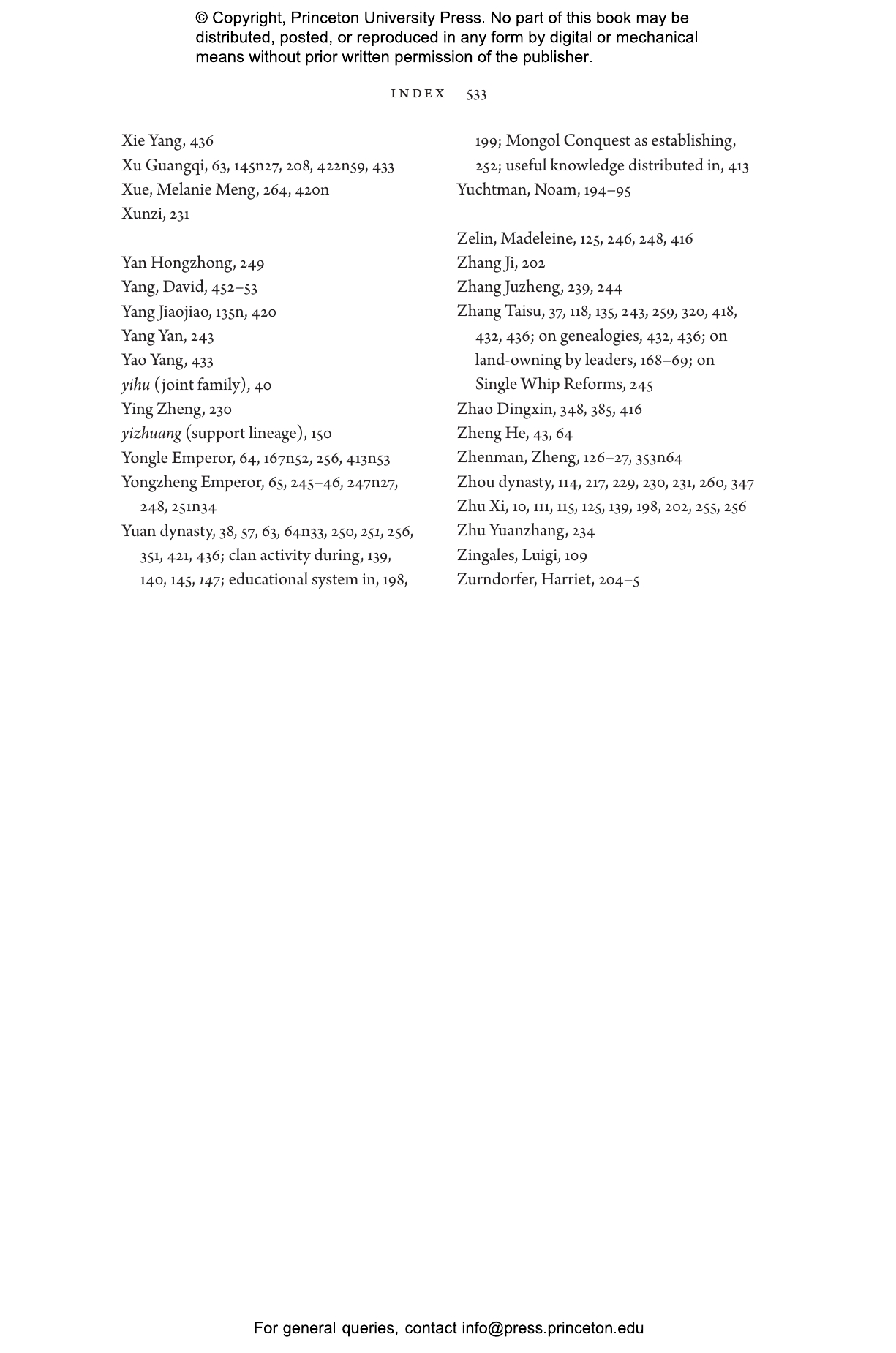In the eleventh century, when Europe was still backward and poor, China was a rich and sophisticated civilization. Yet Europe became the birthplace of democracy and the Industrial Revolution, driving the Great Enrichment, while China stagnated until the end of the twentieth century and was always ruled by autocracies. Two Paths to Prosperity traces the emergence of two very different social organizations in premodern China and Europe—the clan and the corporation—showing how they were key factors in the economic and political divergence of these two great civilizations.
In this landmark book, three leading economists offer a bold new account of why Europe and China evolved along such different trajectories. In the early Middle Ages, public goods like risk sharing, religious worship, education, and conflict resolution were provided by nonstate organizations in both societies. China increasingly relied on kin-based cooperation within clans, while weaker kinship ties in Europe gave rise to corporations such as guilds, universities, and self-governing towns. Despite performing similar functions, clans and corporations were built on very different principles—with lasting consequences until today.
Providing a novel answer to a fundamental question in economic and political history, Two Paths to Prosperity shows how extended kinship in Chinese society facilitated the consolidation of autocracy and hindered innovation and economic development, and how corporations in Europe influenced emerging state institutions and set the stage for the Industrial Revolution.
Avner Greif is the Bowman Family Endowed Professor Emeritus in Humanities and Sciences and Professor of Economics at Stanford University. Joel Mokyr is the Robert H. Strotz Professor of Arts and Sciences and Professor of Economics and History at Northwestern University and Sackler Professor at the Eitan Berglas School of Economics at Tel Aviv University. Guido Tabellini is the Intesa Sanpaolo Chair in Political Economics and Vice President at Bocconi University.
“A major new attempt to explain the biggest puzzle of world economic history. This book takes the debate to a new level of clarity and sophistication. Unputdownable.”—James A. Robinson, University of Chicago
“In Two Paths to Prosperity, a dream team of leading economists brilliantly addresses one of the great questions in the social sciences: Why Europe, not China? With fresh insight and compelling analysis, this book reshapes the debate and deepens our understanding of the historical roots of these two divergent economic systems.”—Jan Luiten van Zanden, coauthor of Pioneers of Capitalism: The Netherlands 1000–1800
“This profound and fascinating comparison of China and Europe makes a powerful case for how culture, religion, and social organizations shape economic outcomes. They deserve as much attention as property rights and representative institutions. A must-read for economists, sociologists, political scientists, and all social science historians.”—Philip T. Hoffman, coauthor of Dark Matter Credit: The Development of Peer-to-Peer Lending and Banking in France
“What enabled Renaissance Europe to overtake China’s economic and technological lead and become the world’s leading economy by the Industrial Revolution? Greif, Mokyr, and Tabellini make a compelling case that the Great Divergence can only be explained by the subtle interplay between culture and social organization and their cumulative impact on political institutions and economic development. A magisterial book that sheds new light on one of the most intriguing puzzles of comparative historical development, Two Paths to Prosperity is a must-read.”—James Kung, University of Melbourne
This publication has been produced to meet accepted Accessibility standards and contains various accessibility features including concise image descriptions, a table of contents, a page list to navigate to pages corresponding to the print source version, elements such as headings for structured navigation, and math formulas in accessible format. Appearance of the text and page layout can be modified according to the capabilities of the reading system.
Accessibility Features
-
WCAG v2.2
-
WCAG level AA
-
Table of contents navigation
-
Single logical reading order
-
Short alternative textual descriptions
-
Print-equivalent page numbering
-
Next / Previous structural navigation
-
Landmark navigation
-
Index navigation
-
Epub Accessibility Specification 1.1
-
ARIA roles provided
-
All non-decorative content supports reading without sight
-
Accessible math content as MathML
-
No known hazards or warnings
